

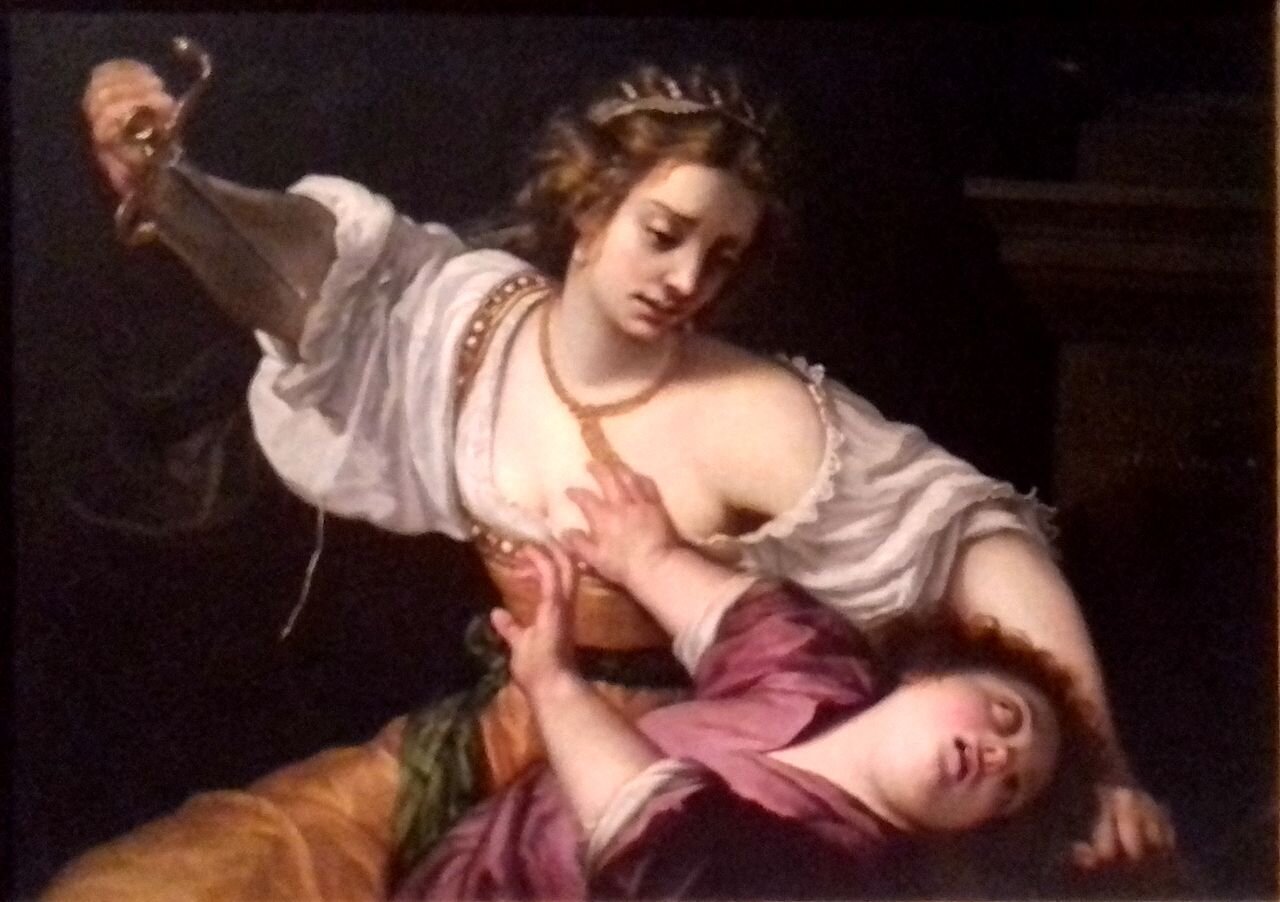

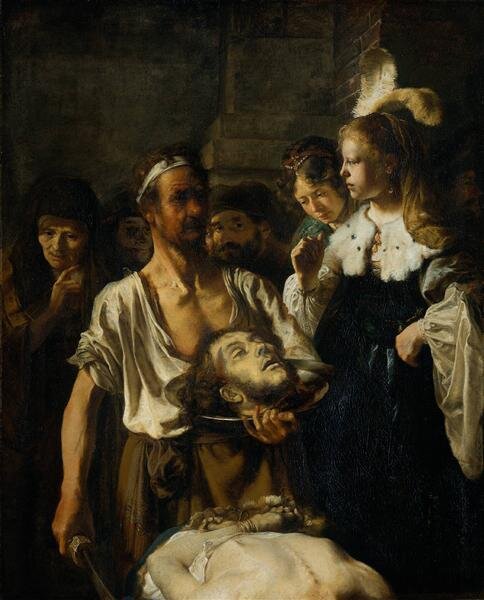













































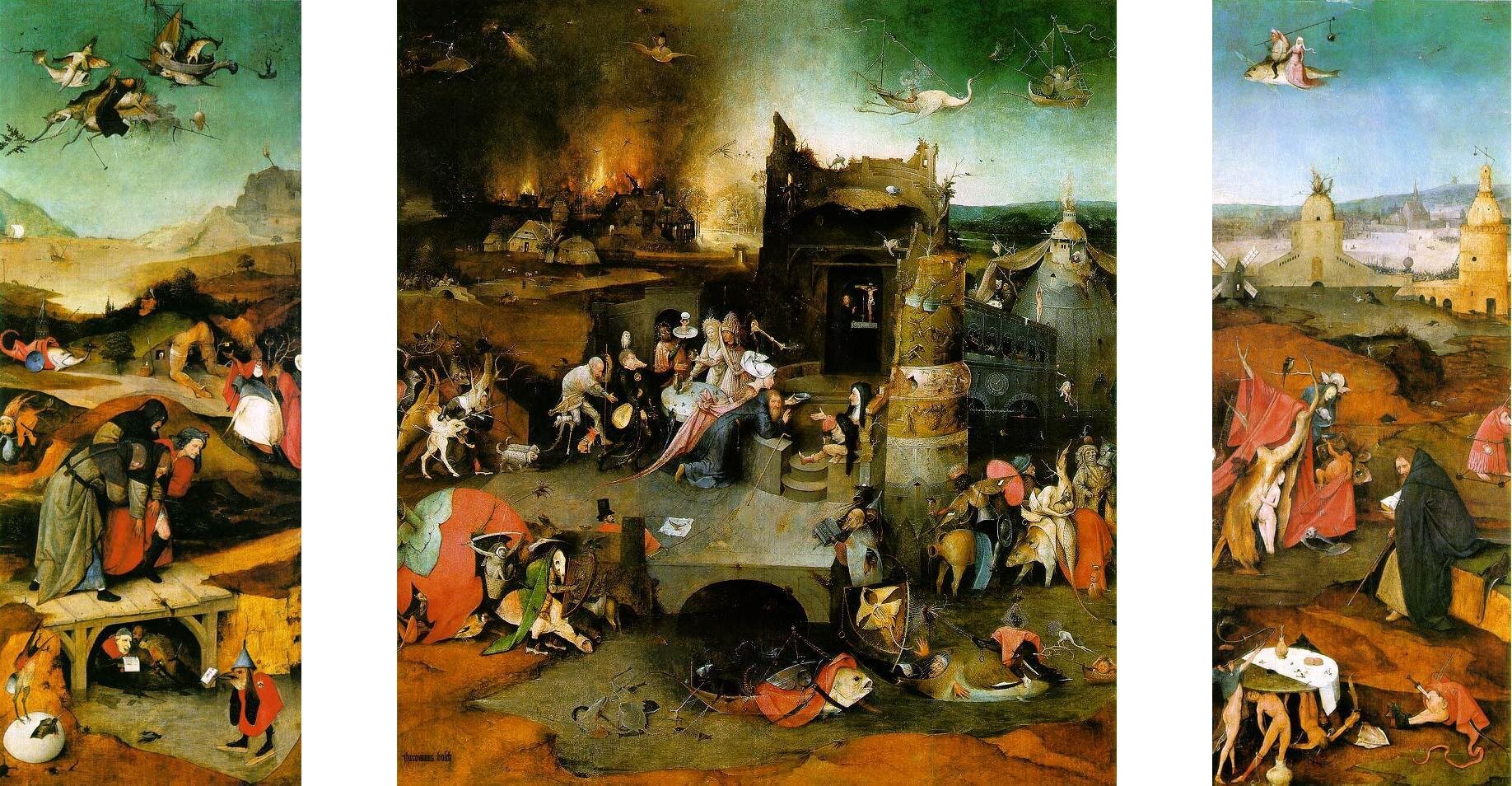







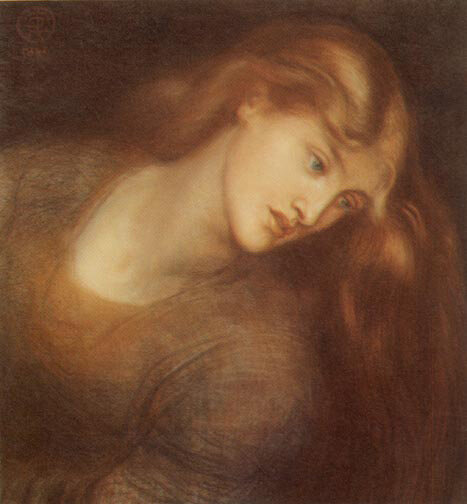


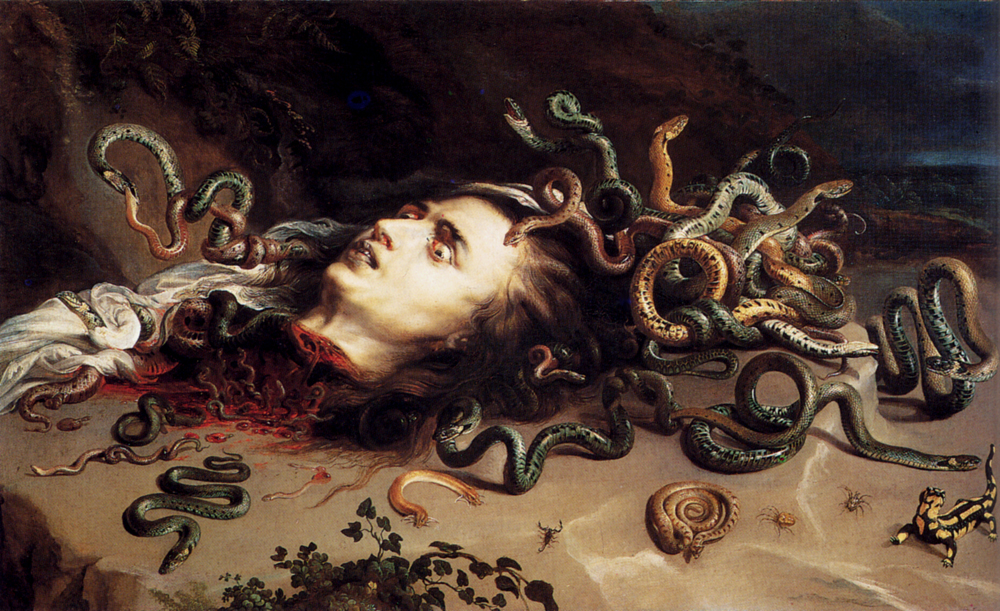

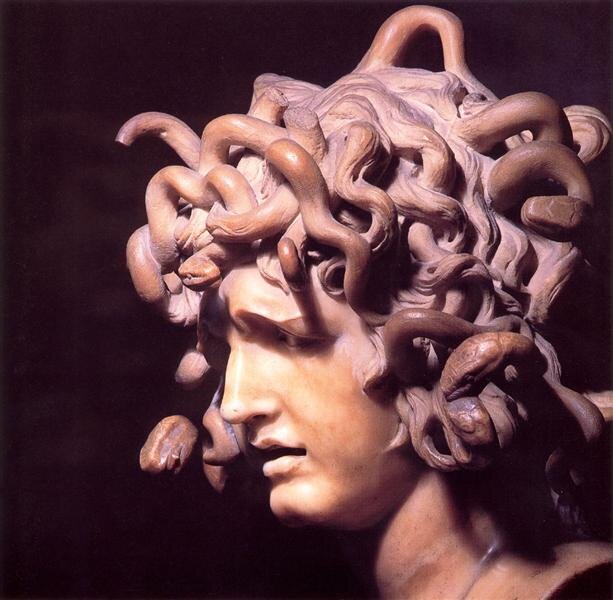
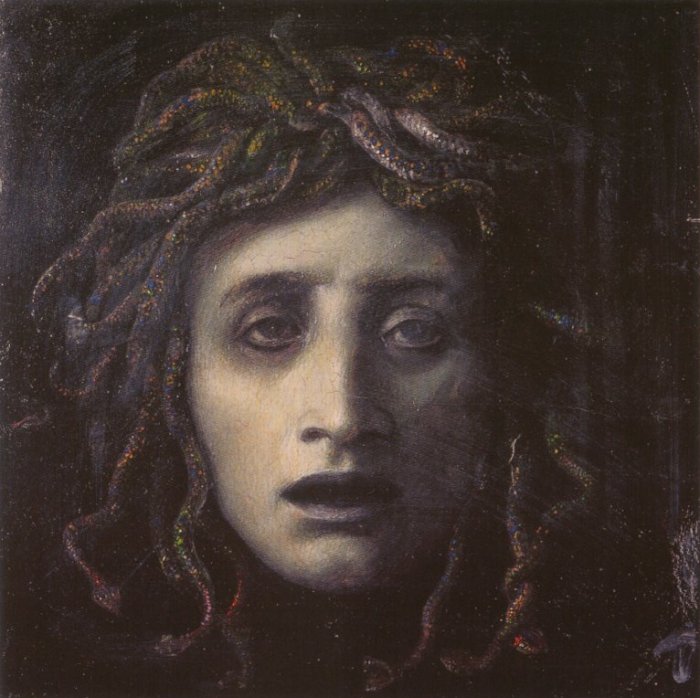
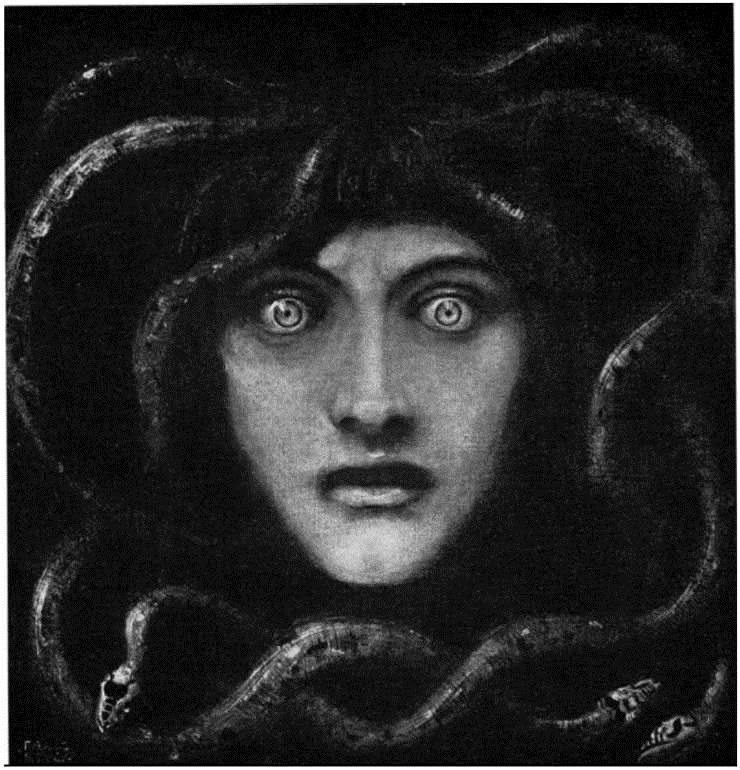
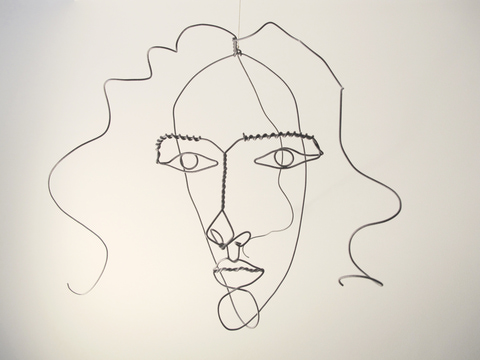
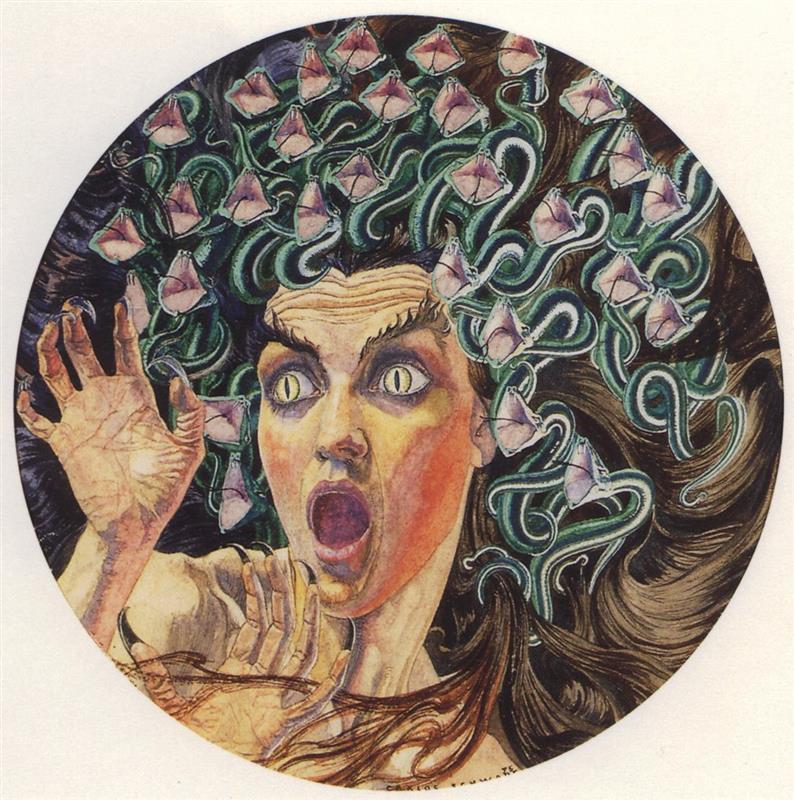
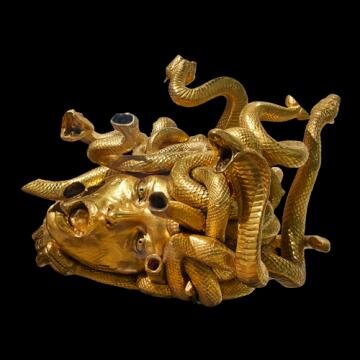
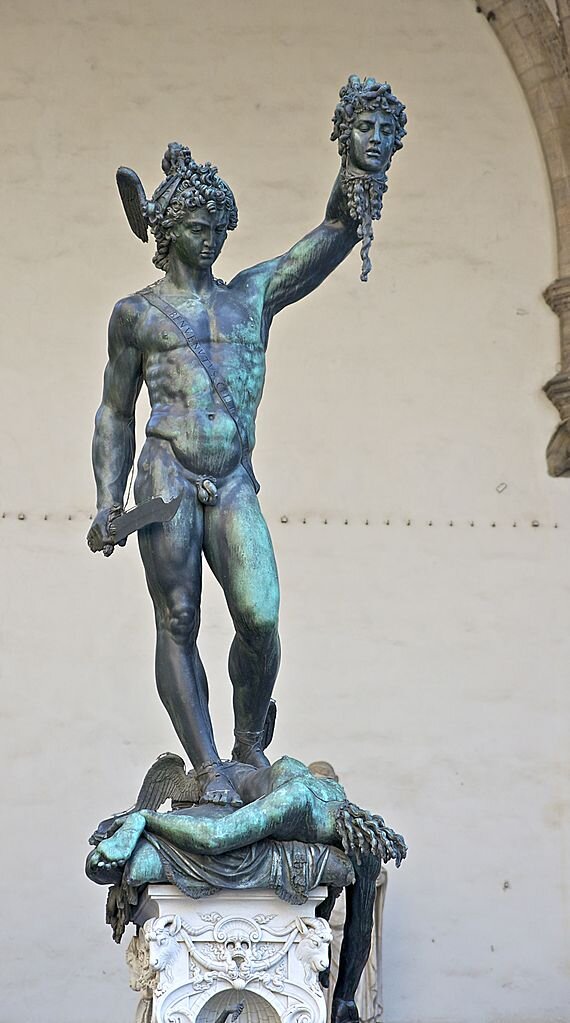


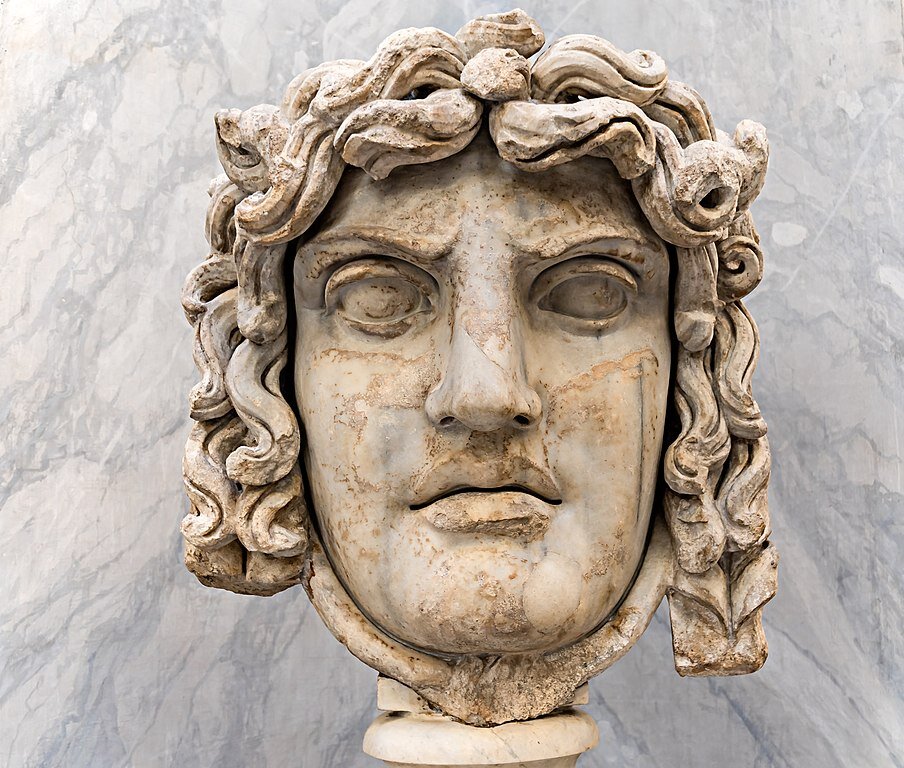
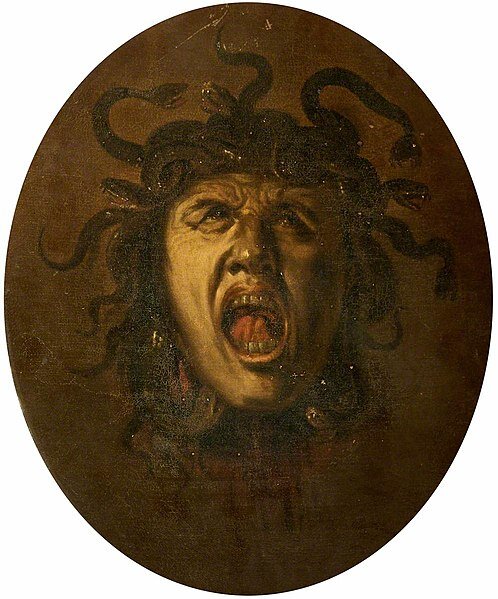
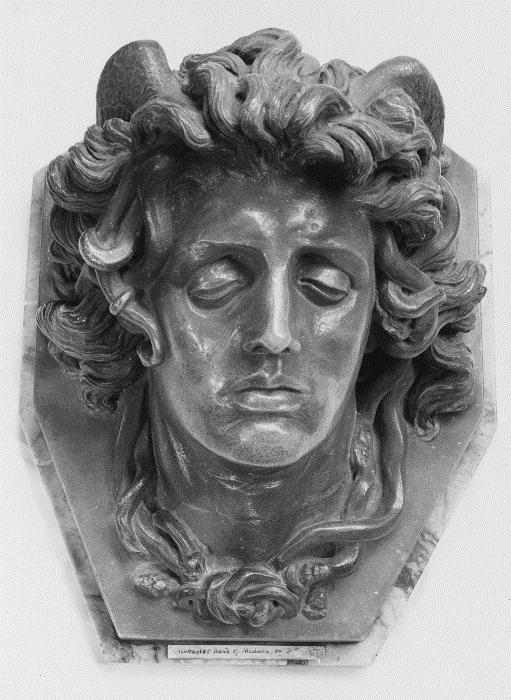

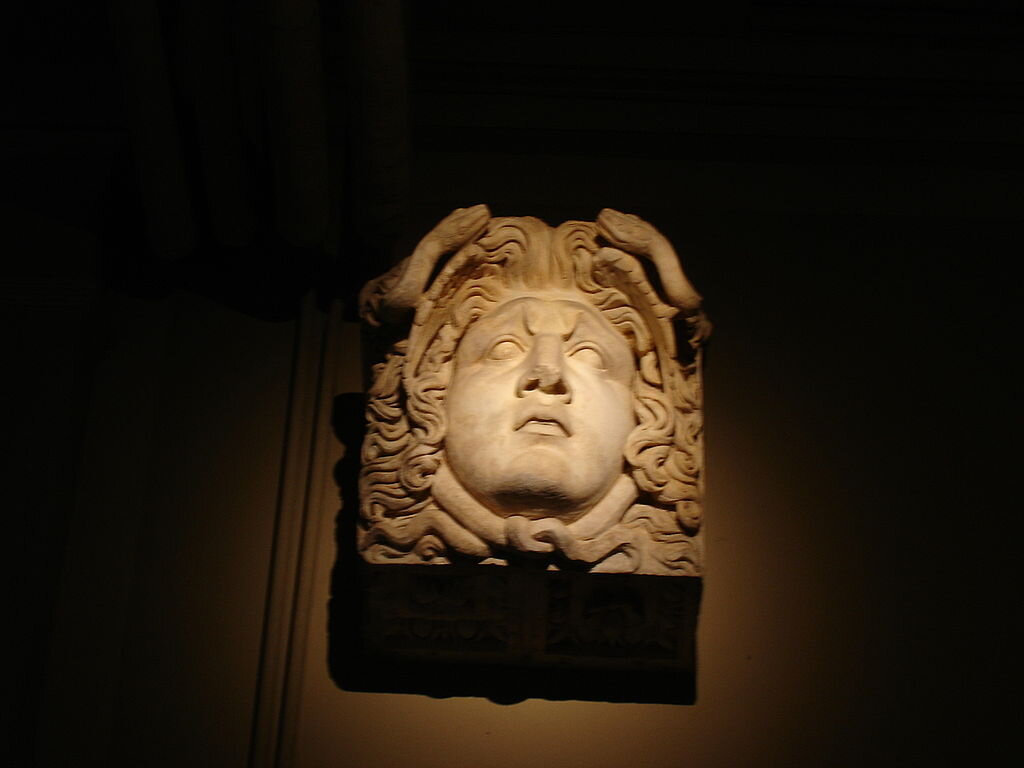
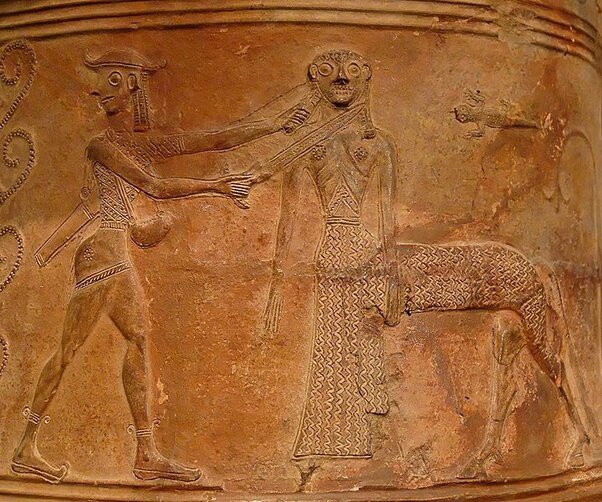


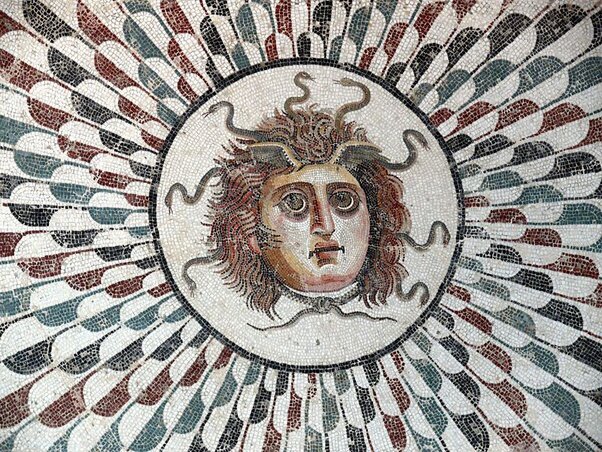


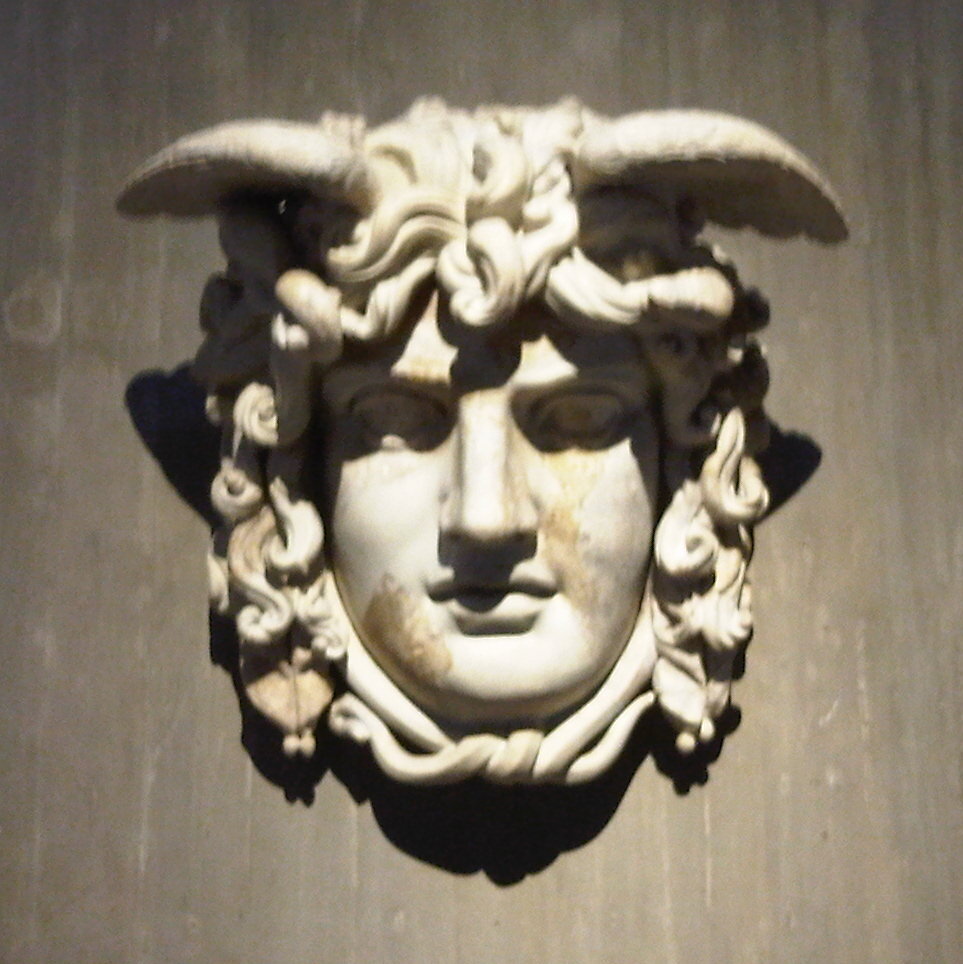

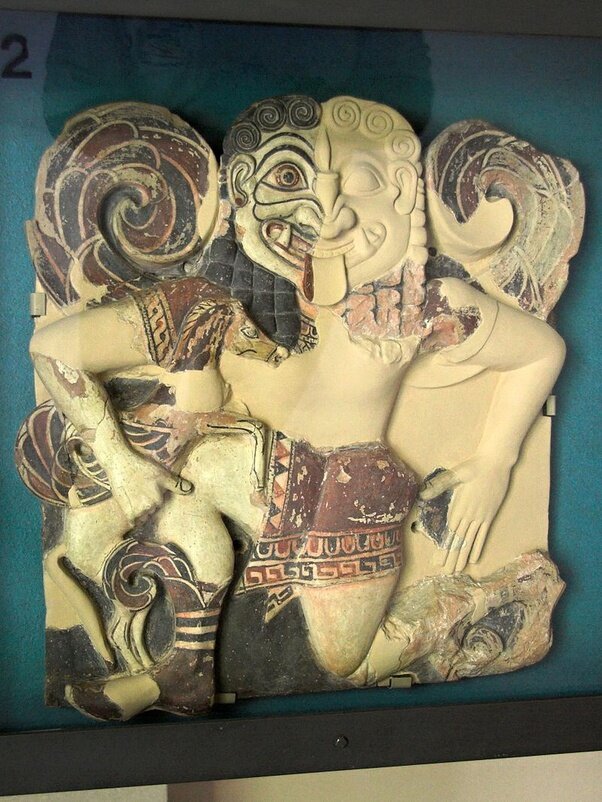
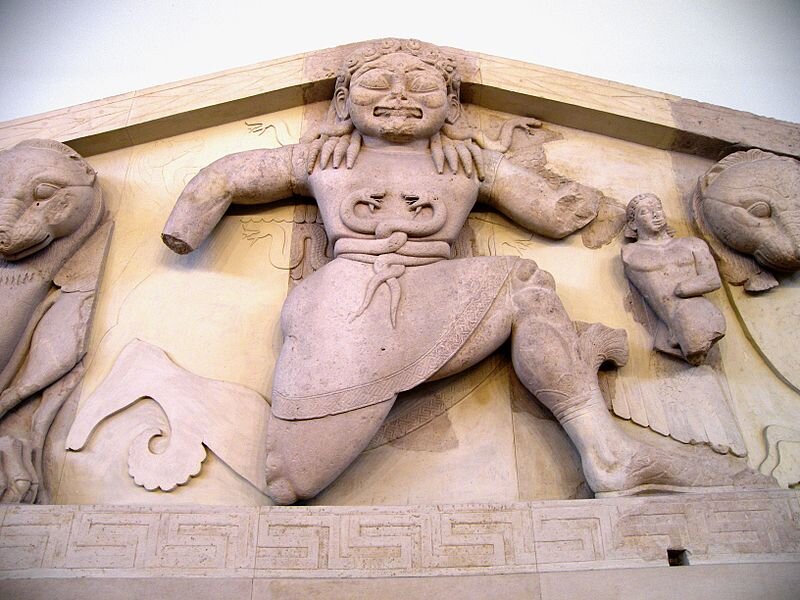
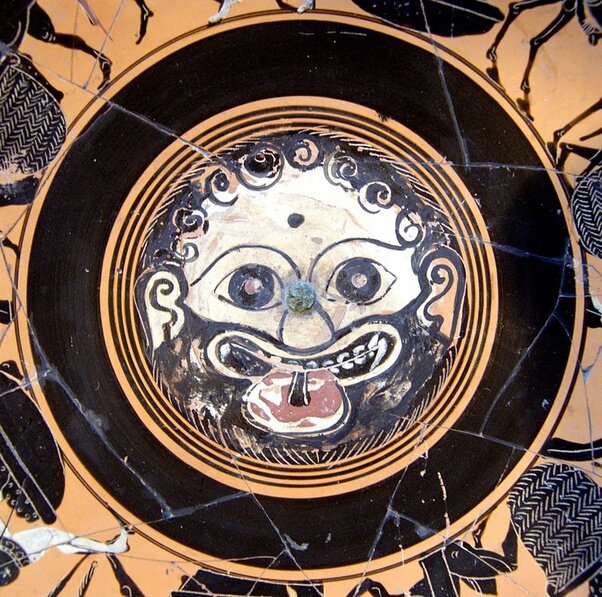
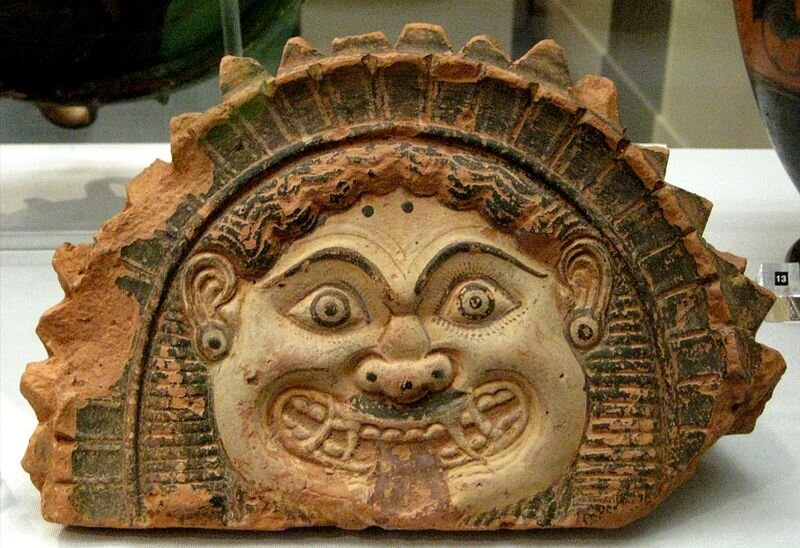
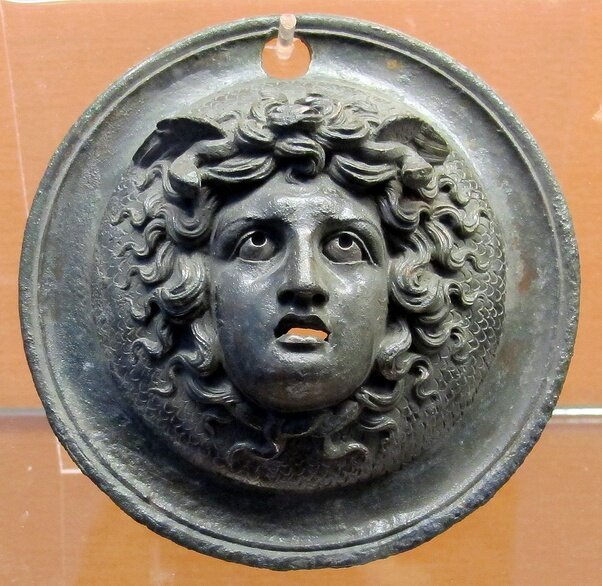
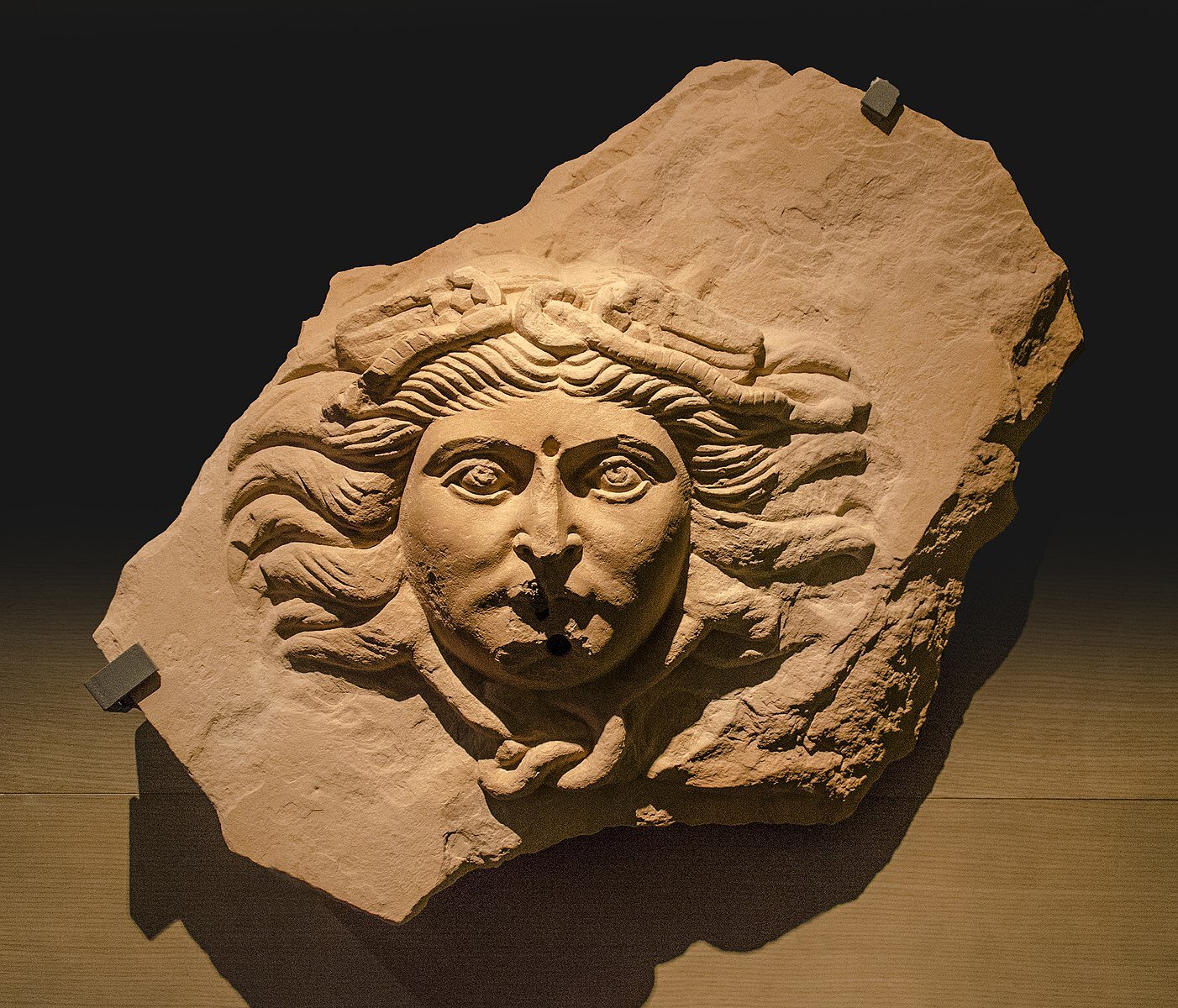
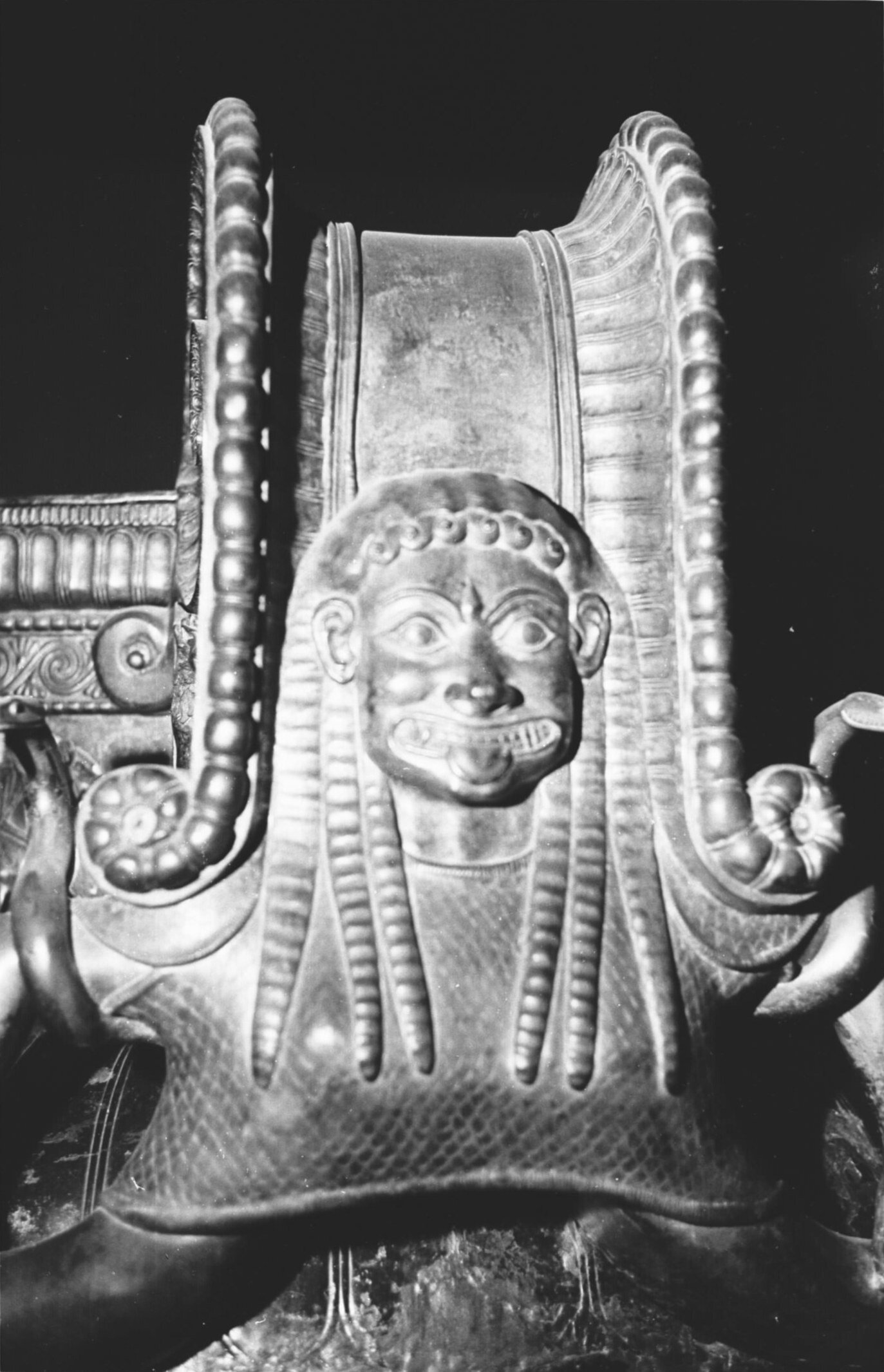
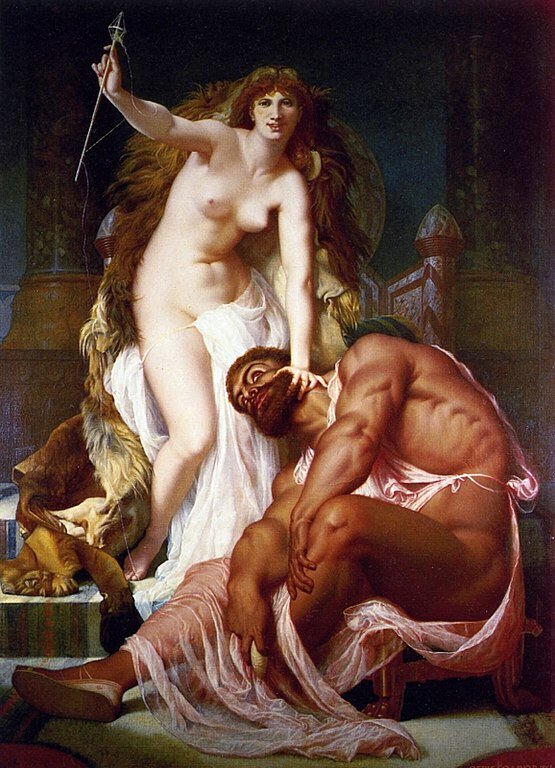
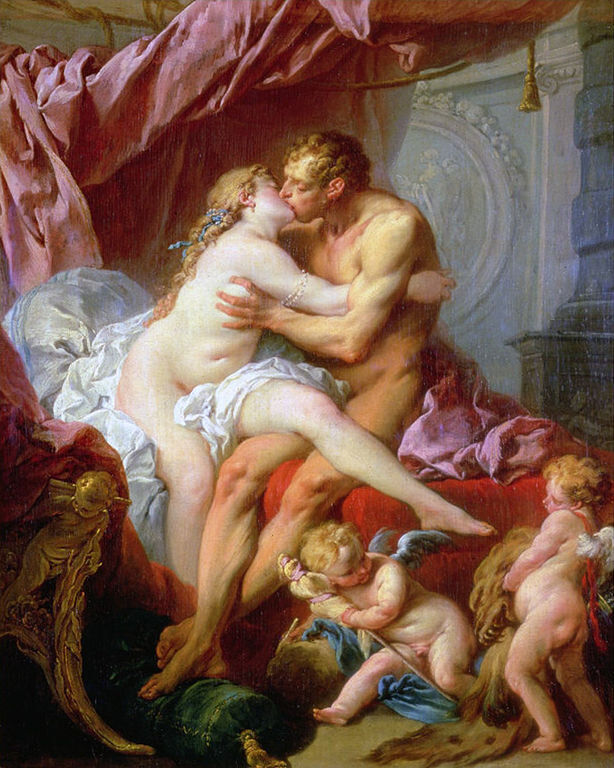
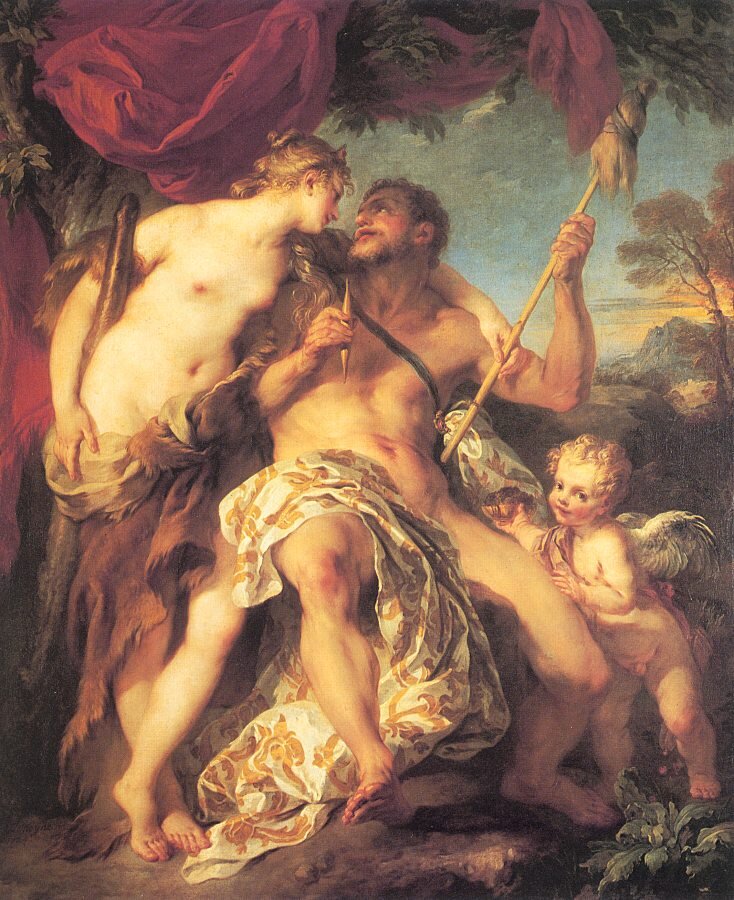
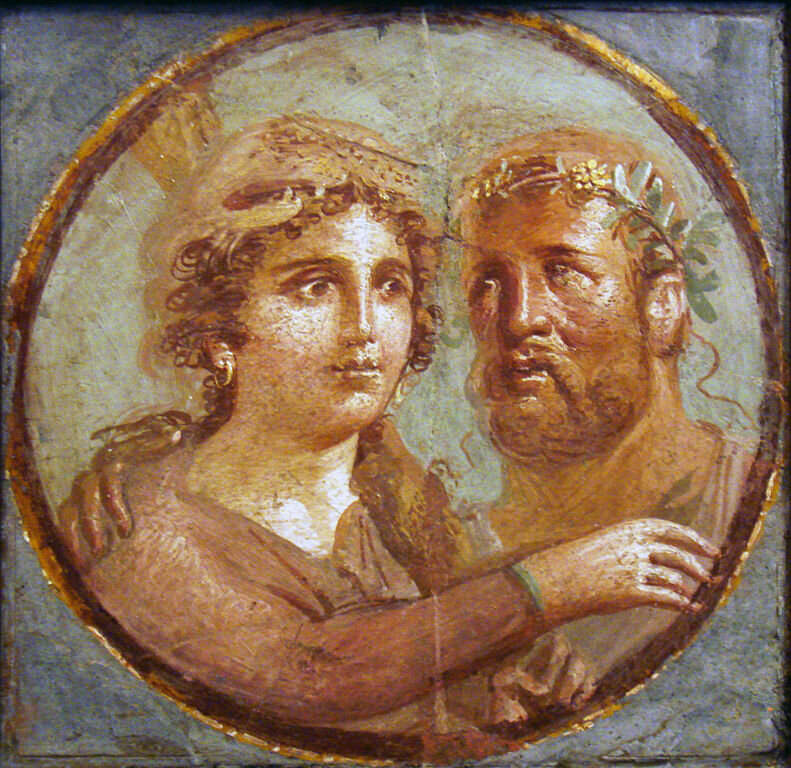
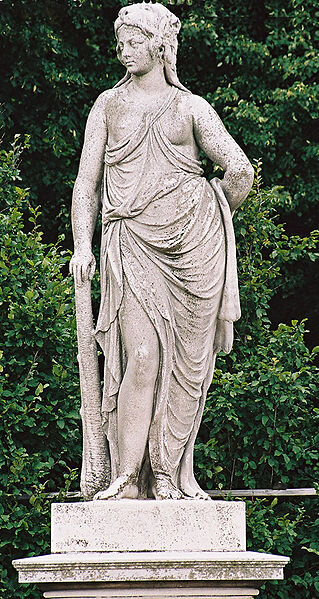
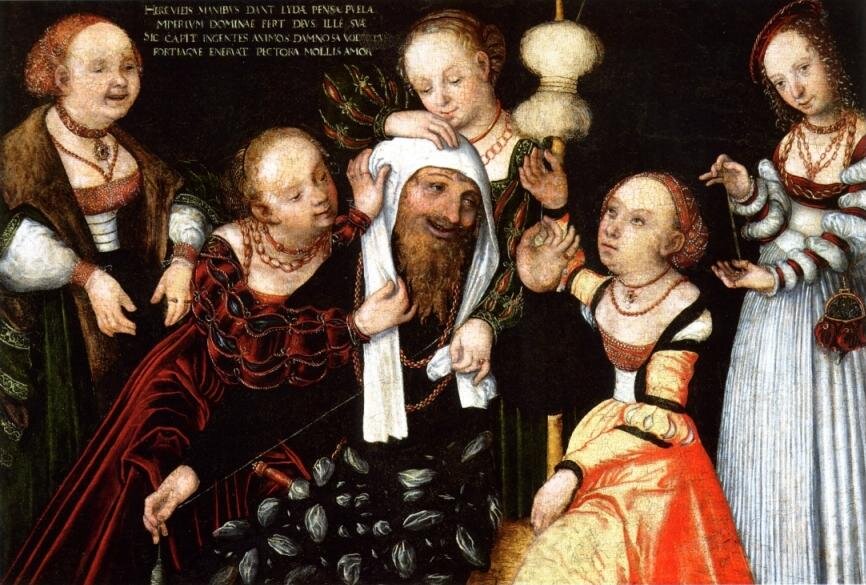
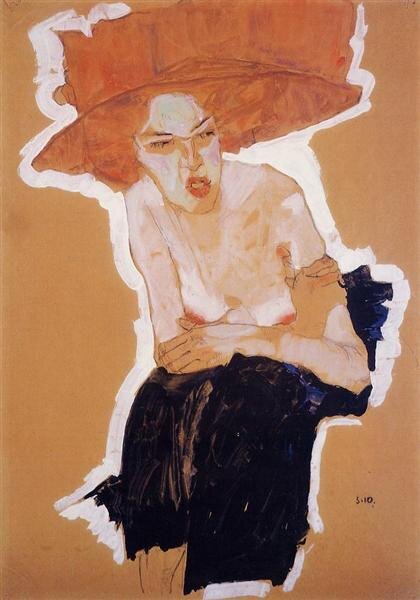
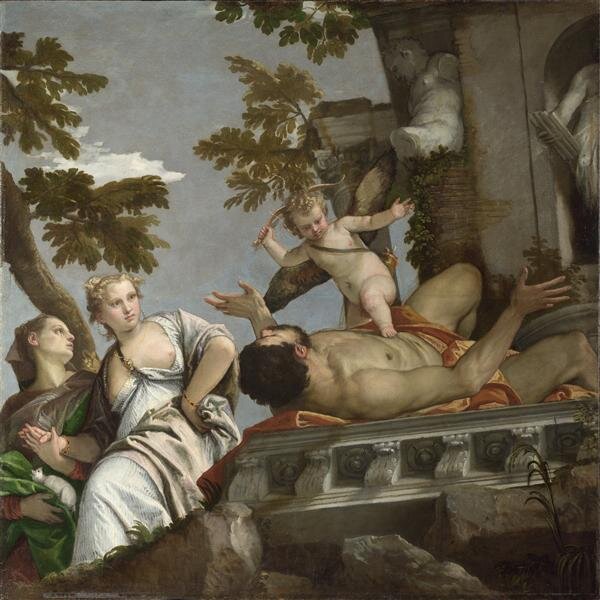
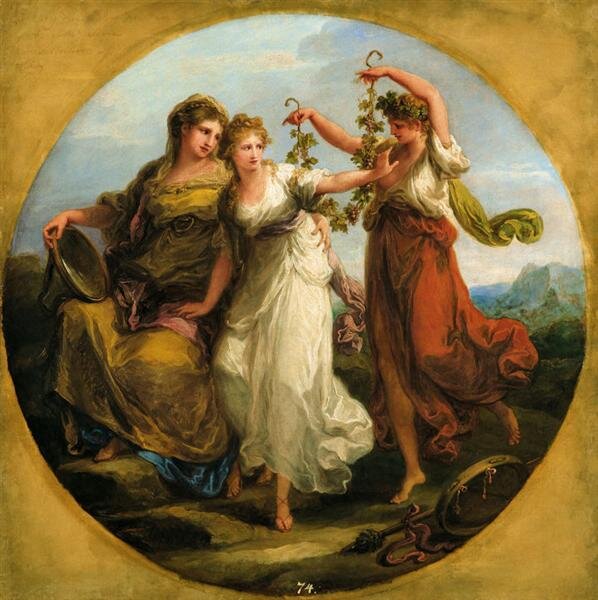
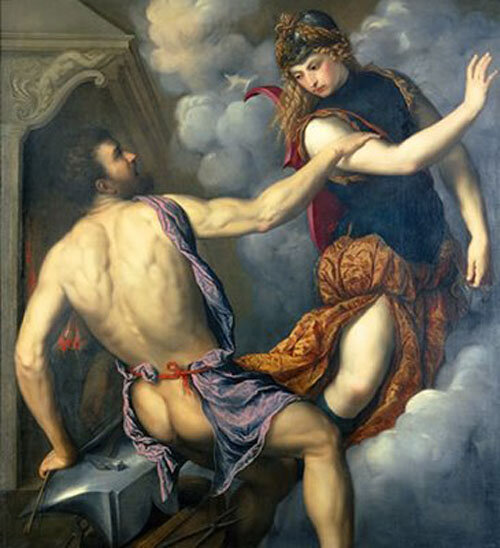
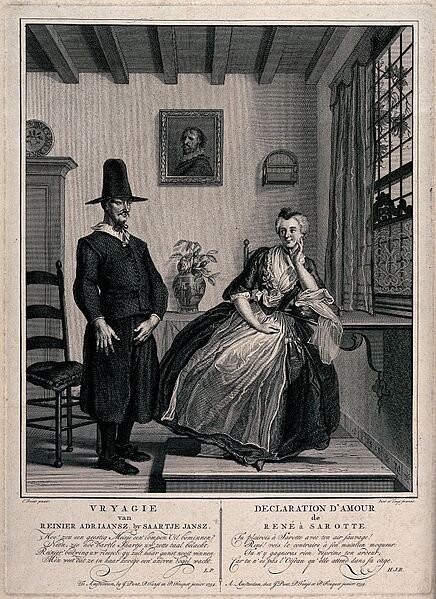
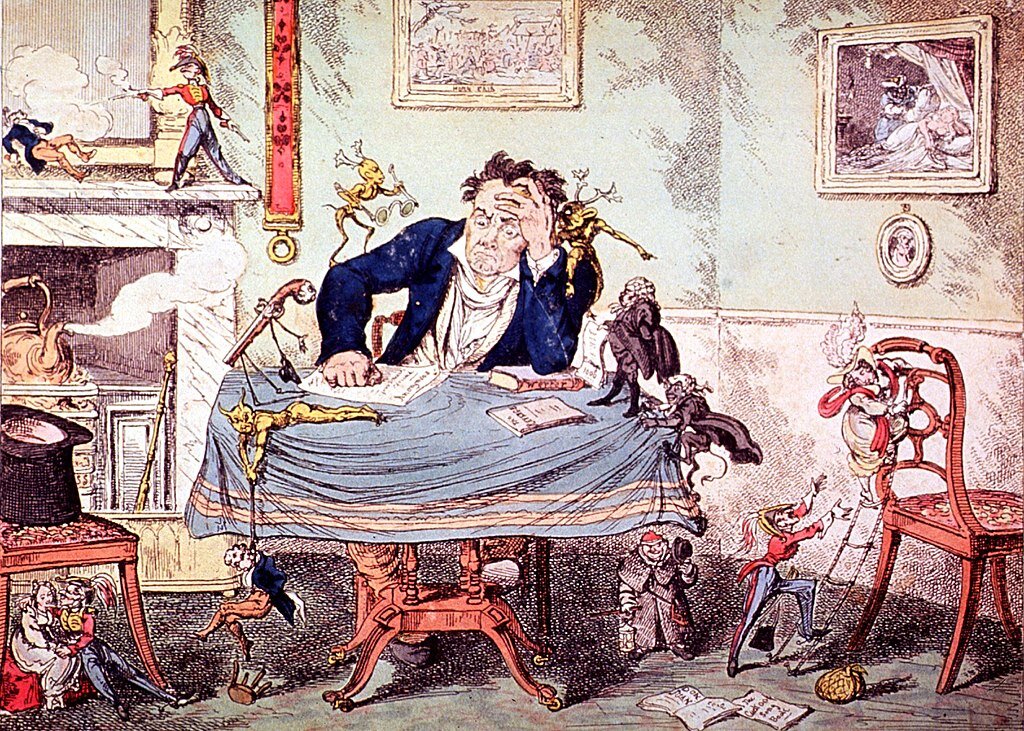
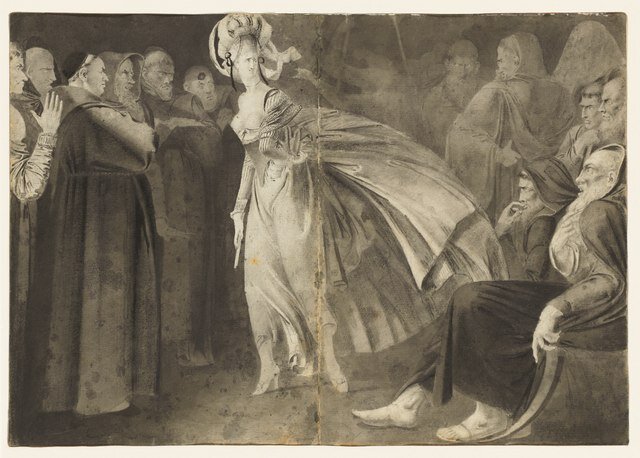
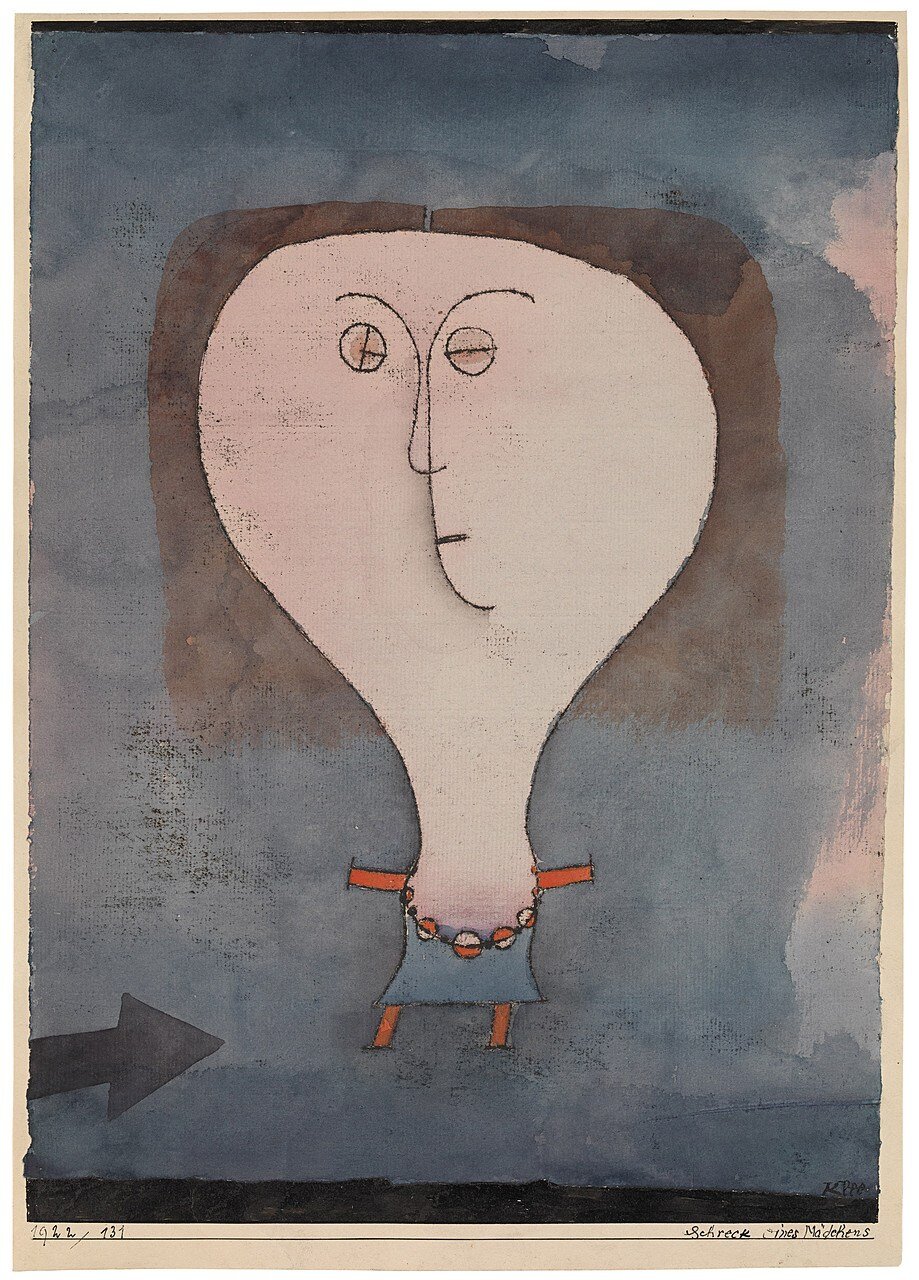
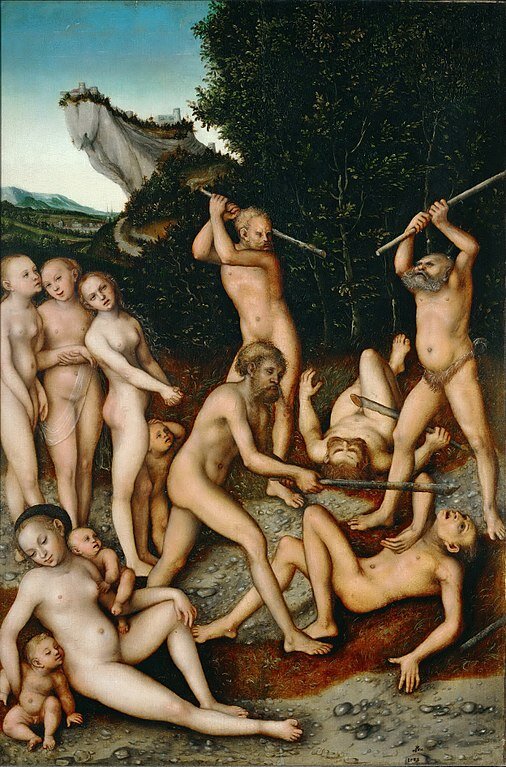
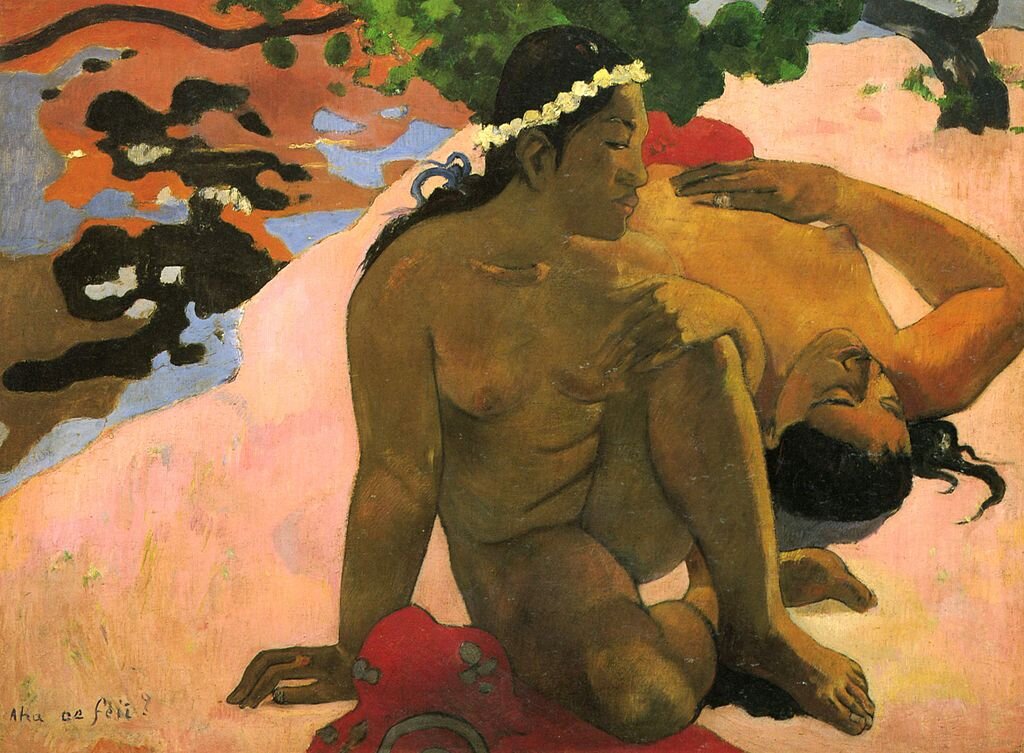
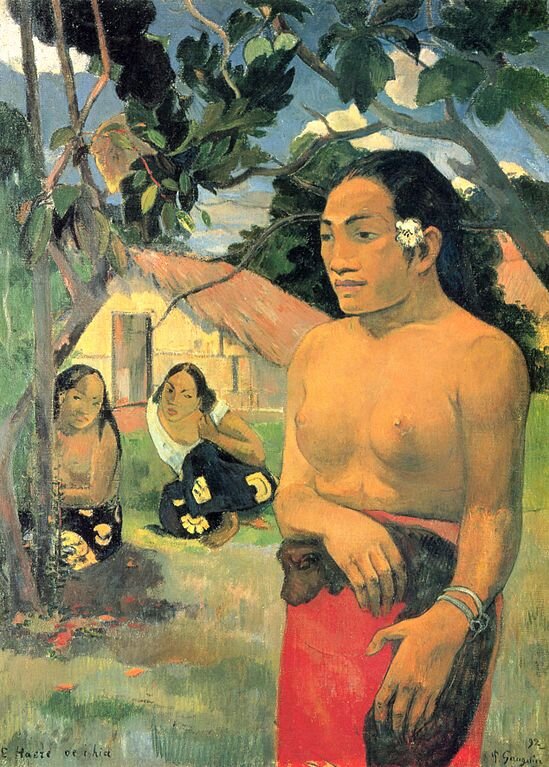

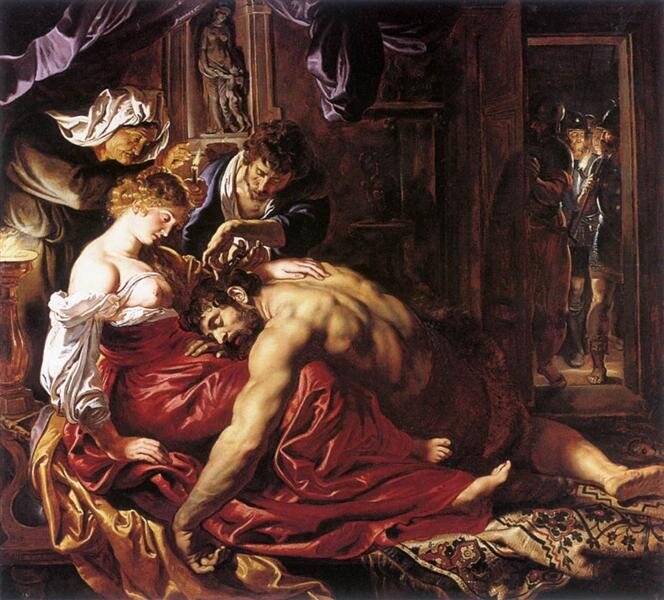
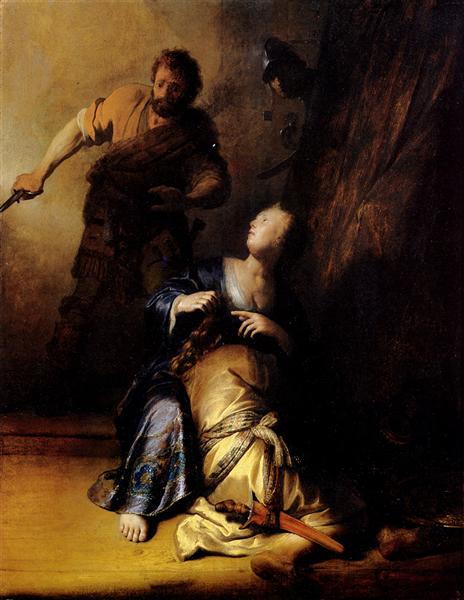
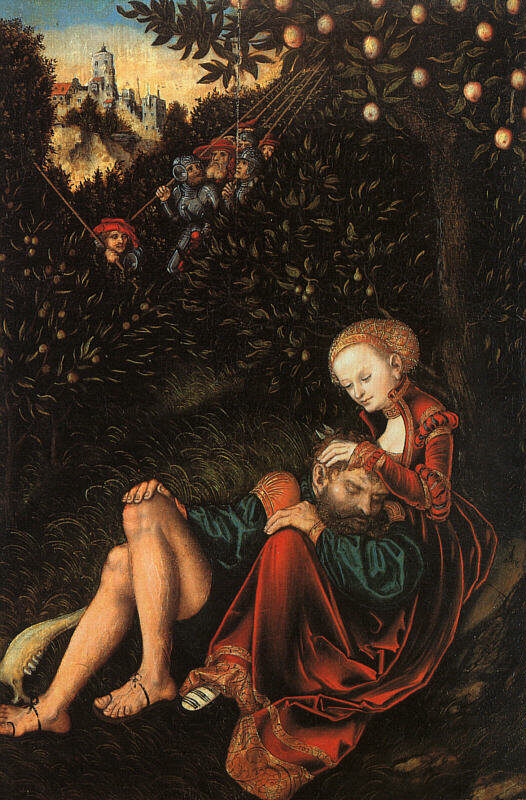


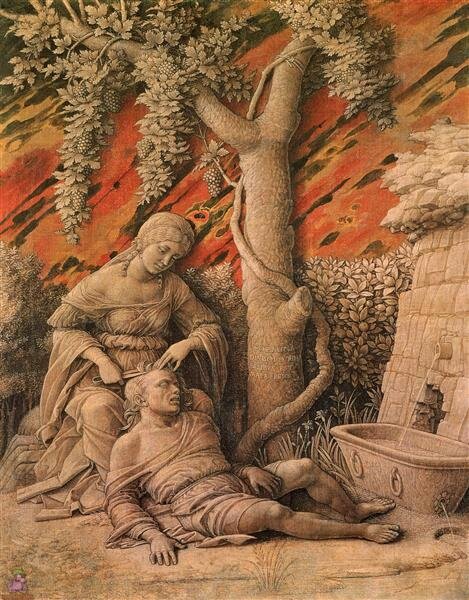
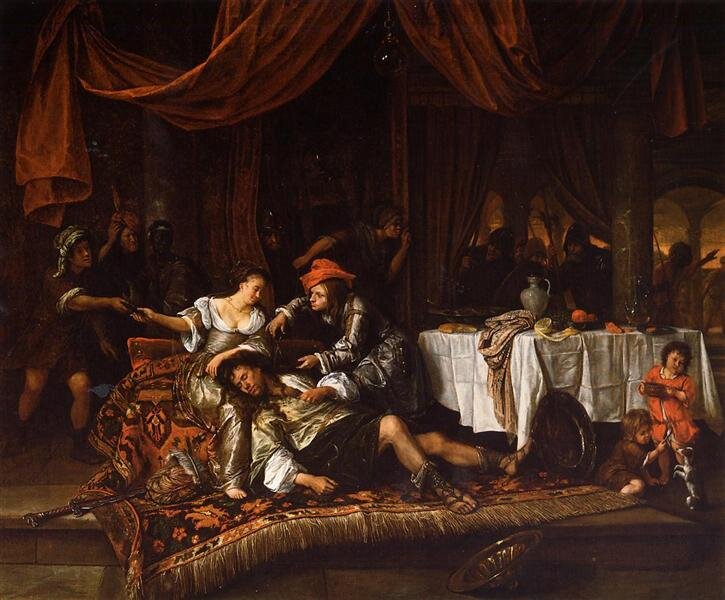
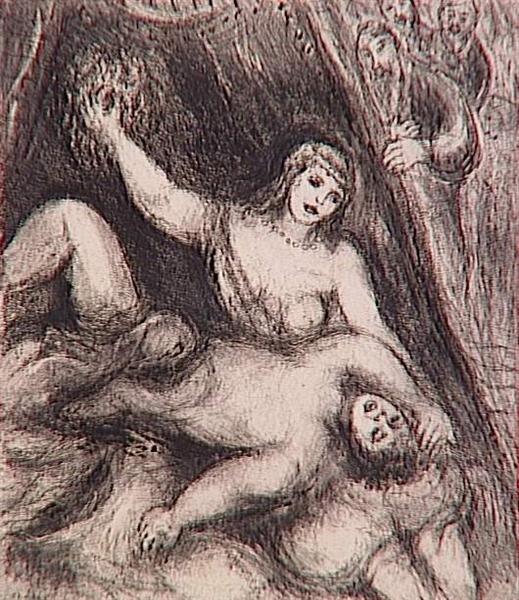
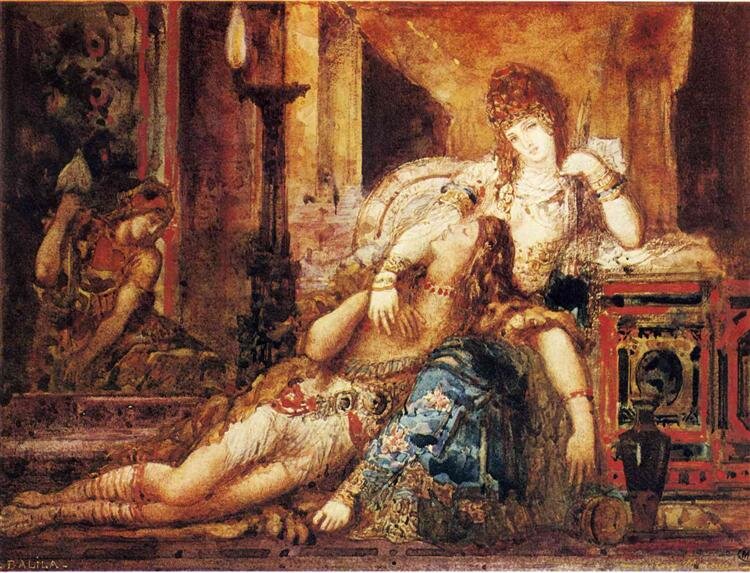
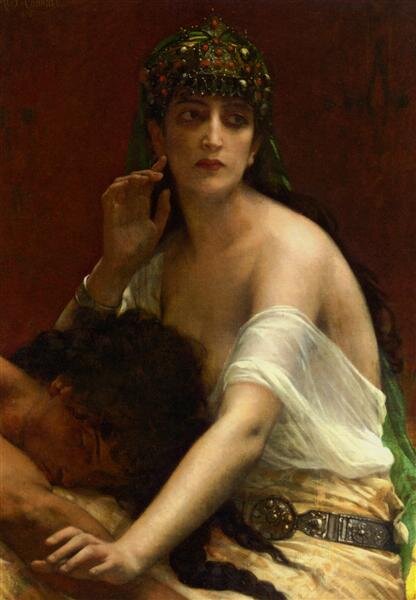
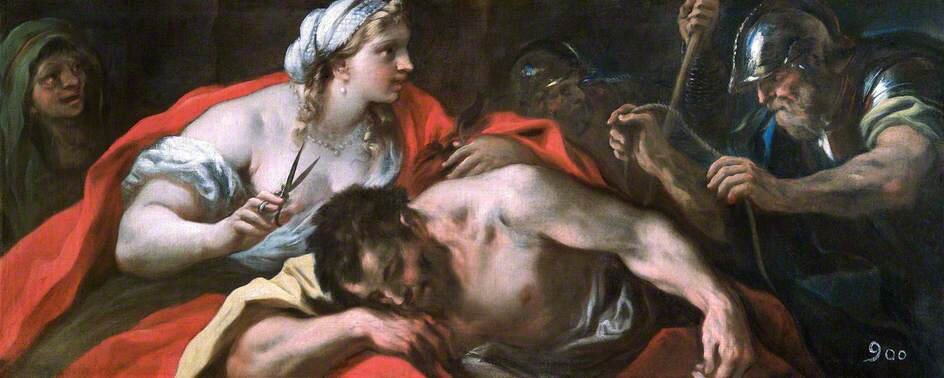

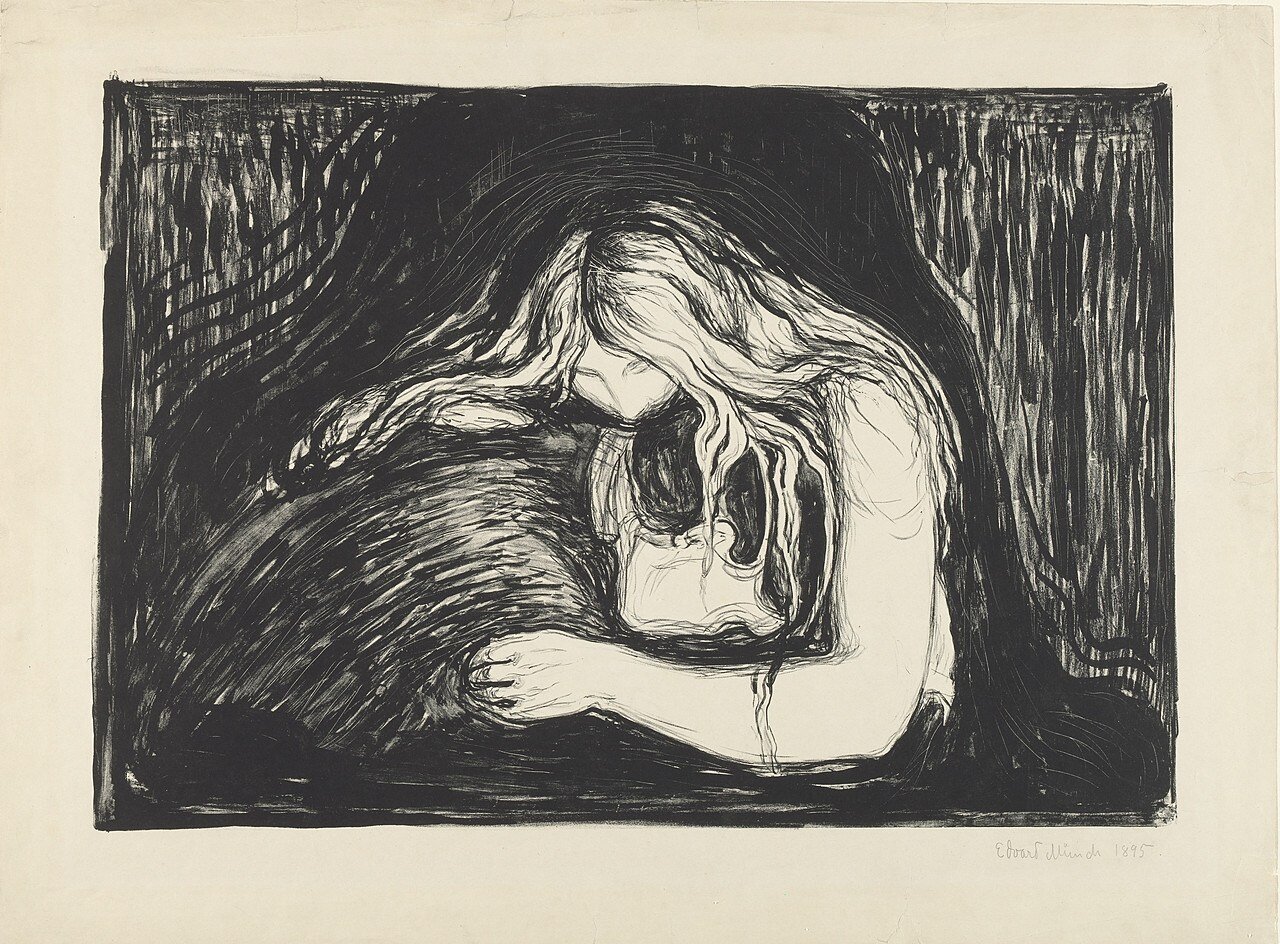
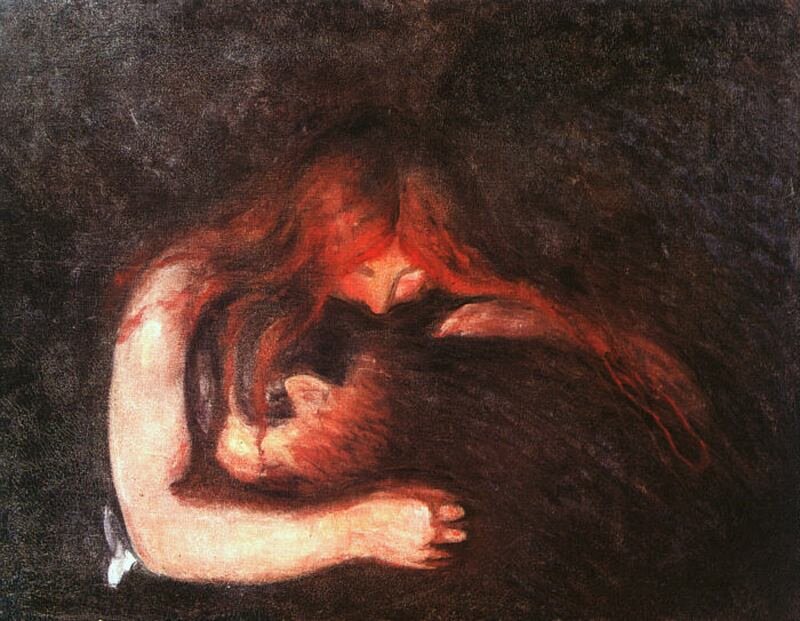

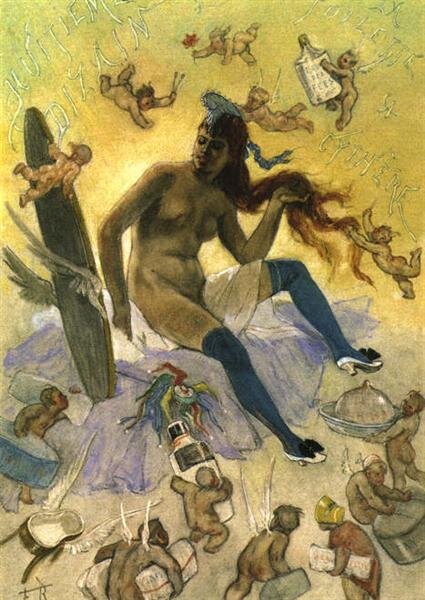
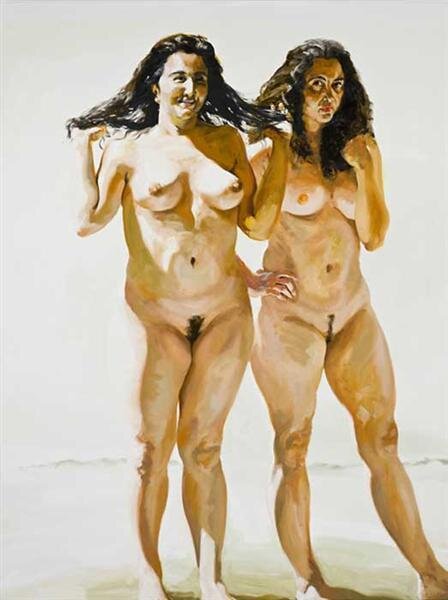
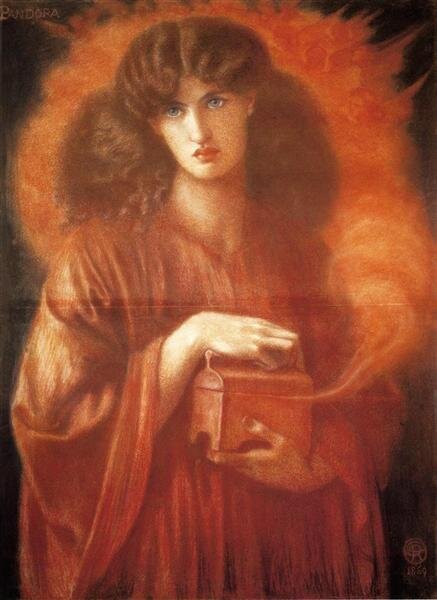
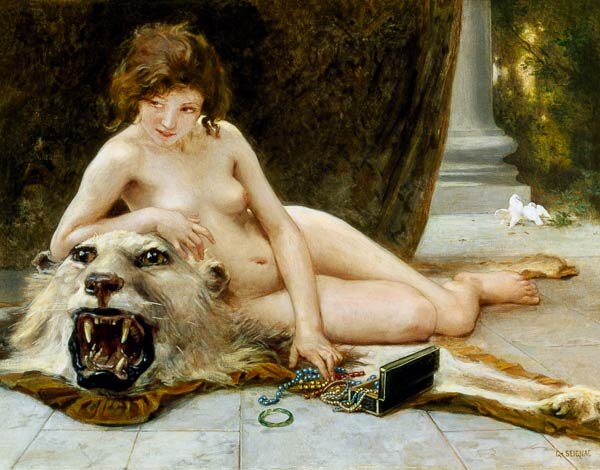
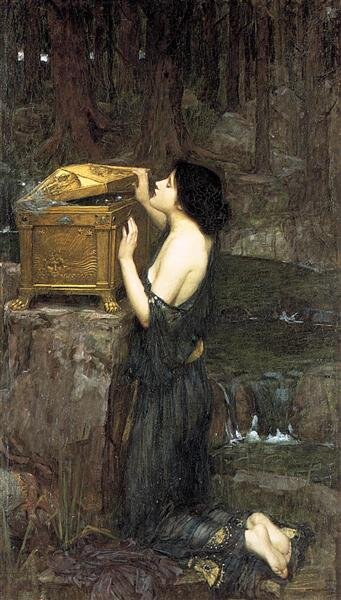
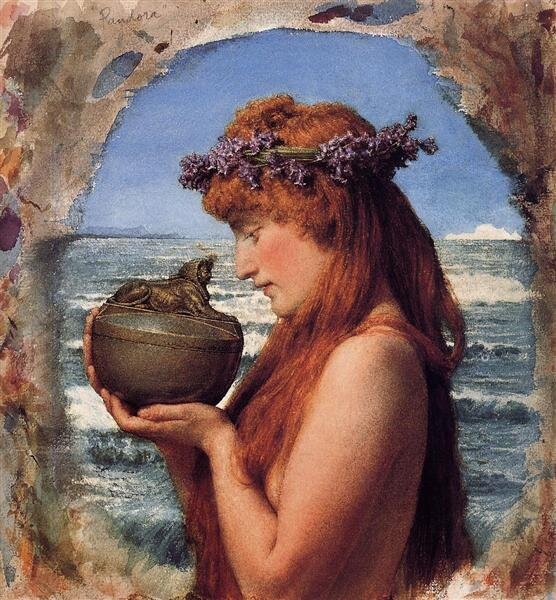
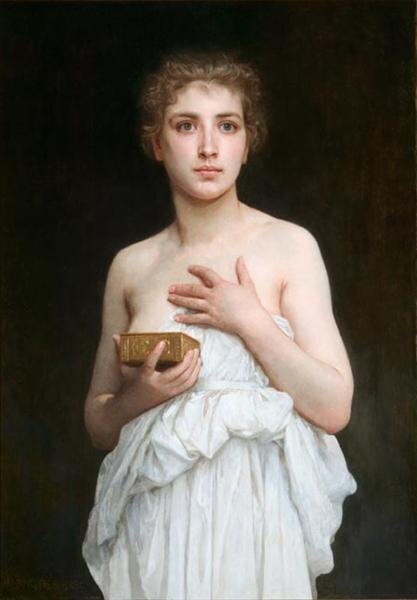

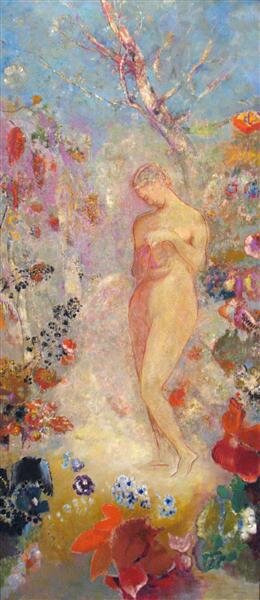
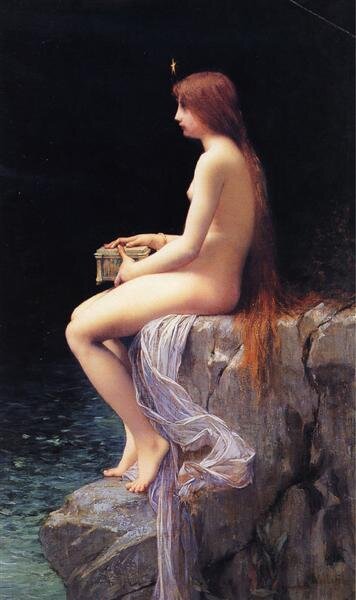


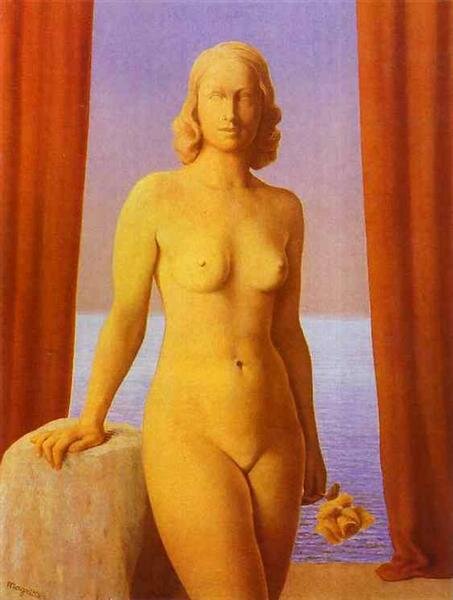
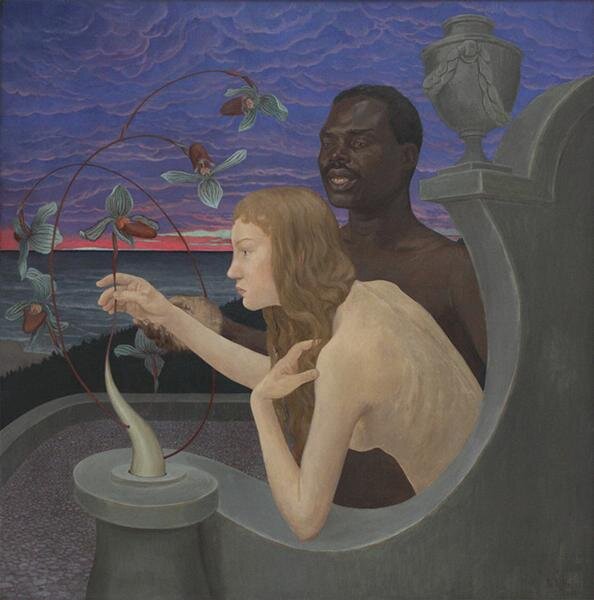
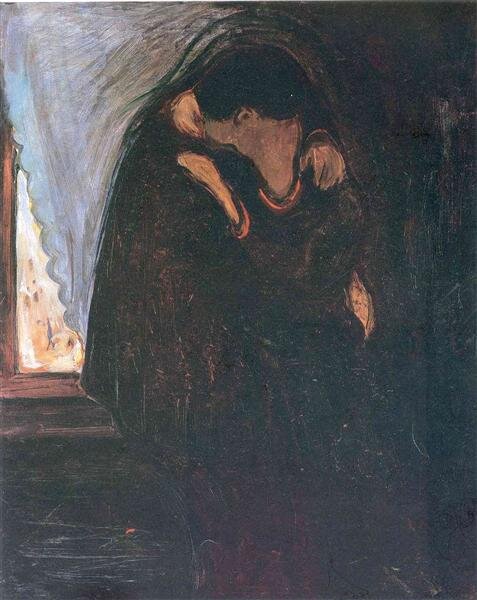

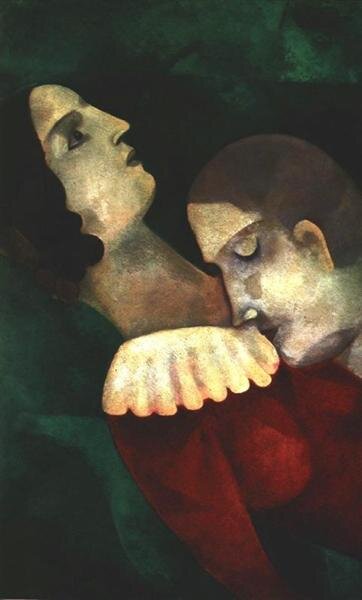


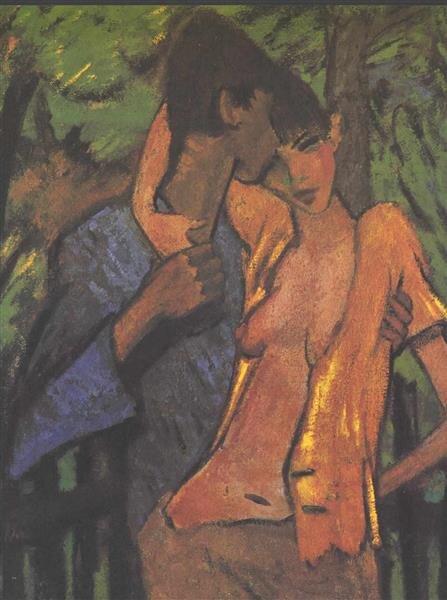
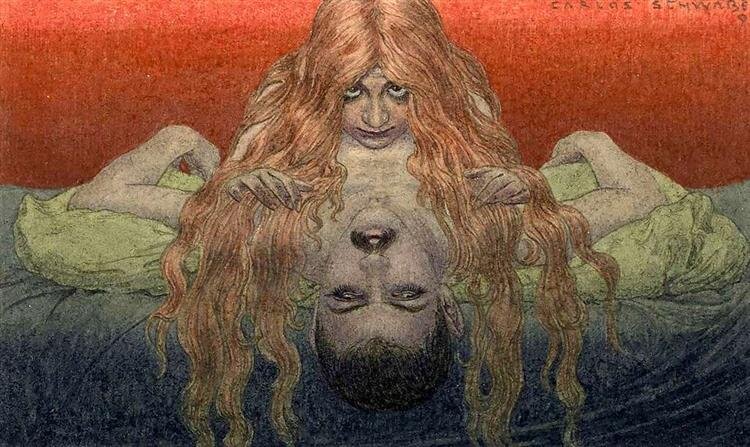
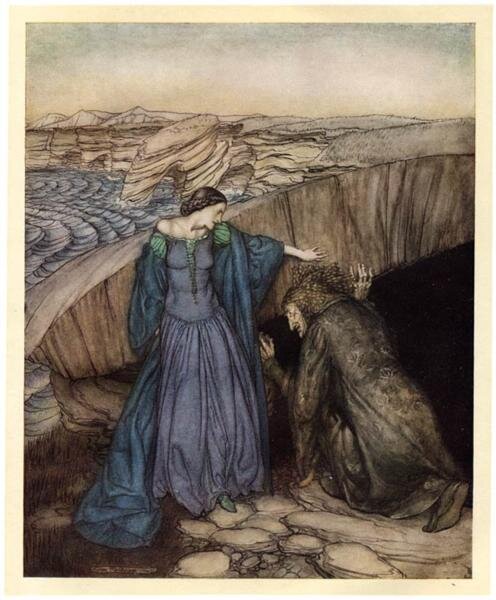



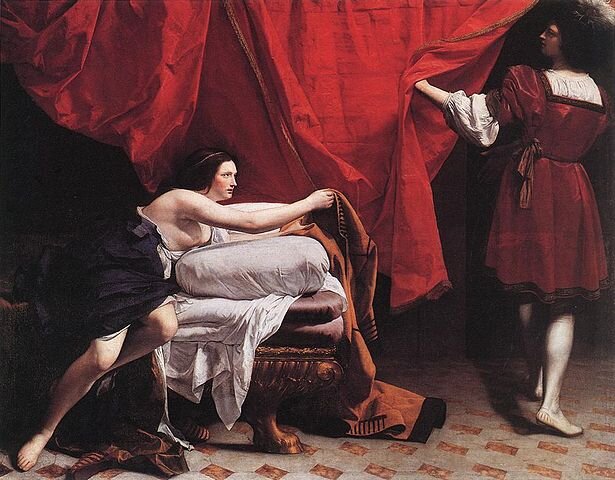

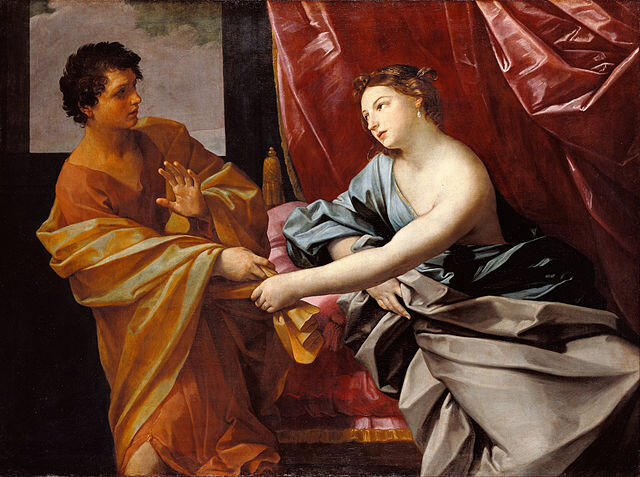
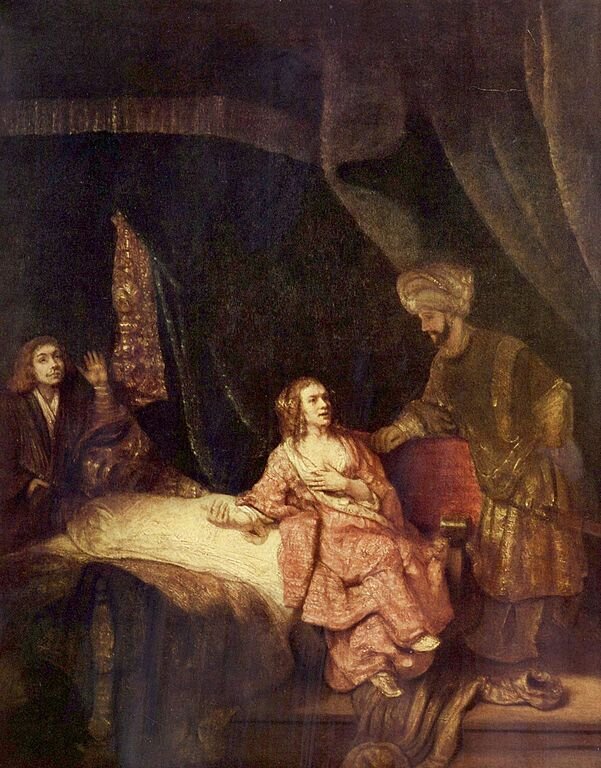
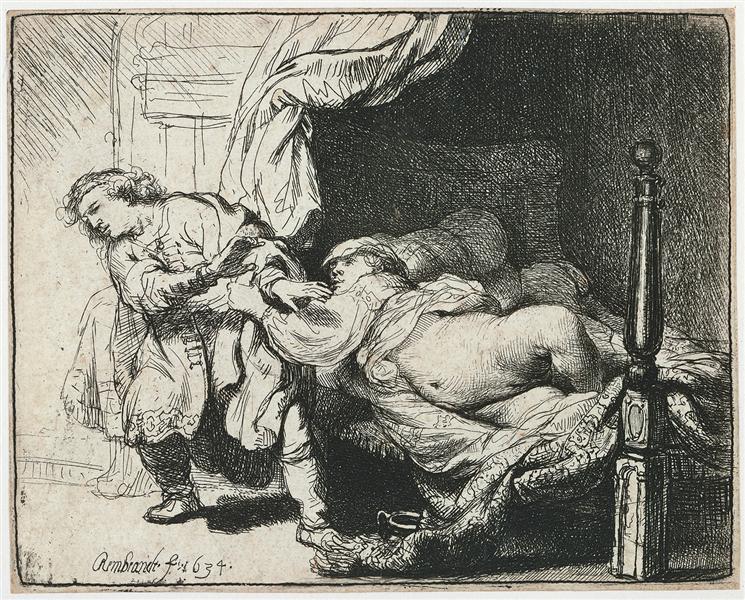
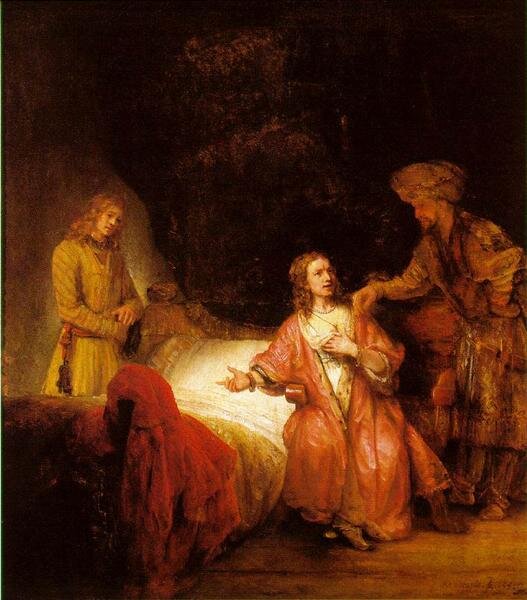
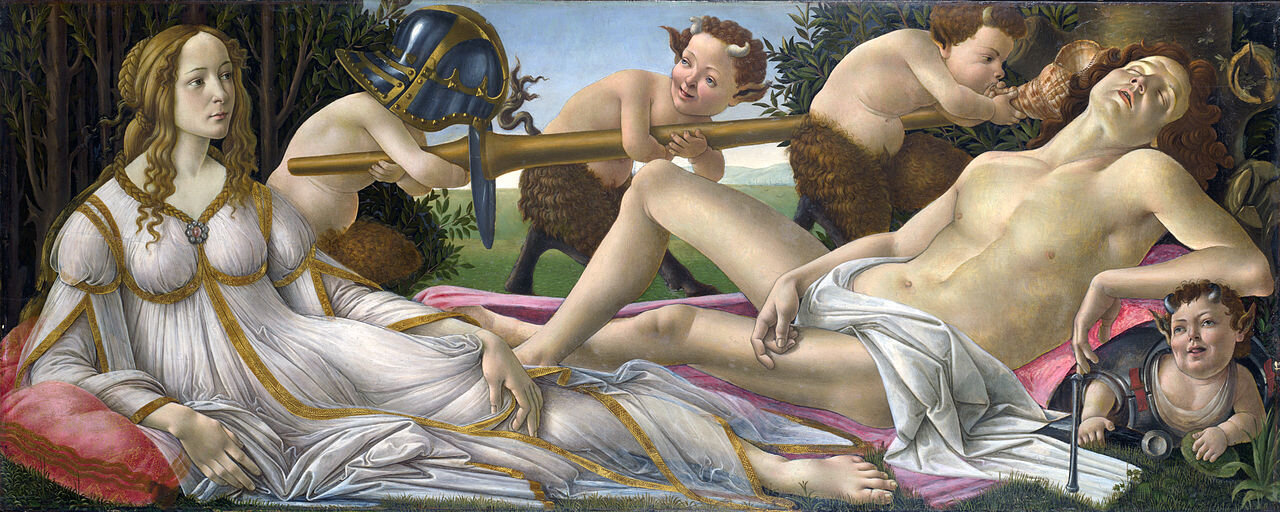







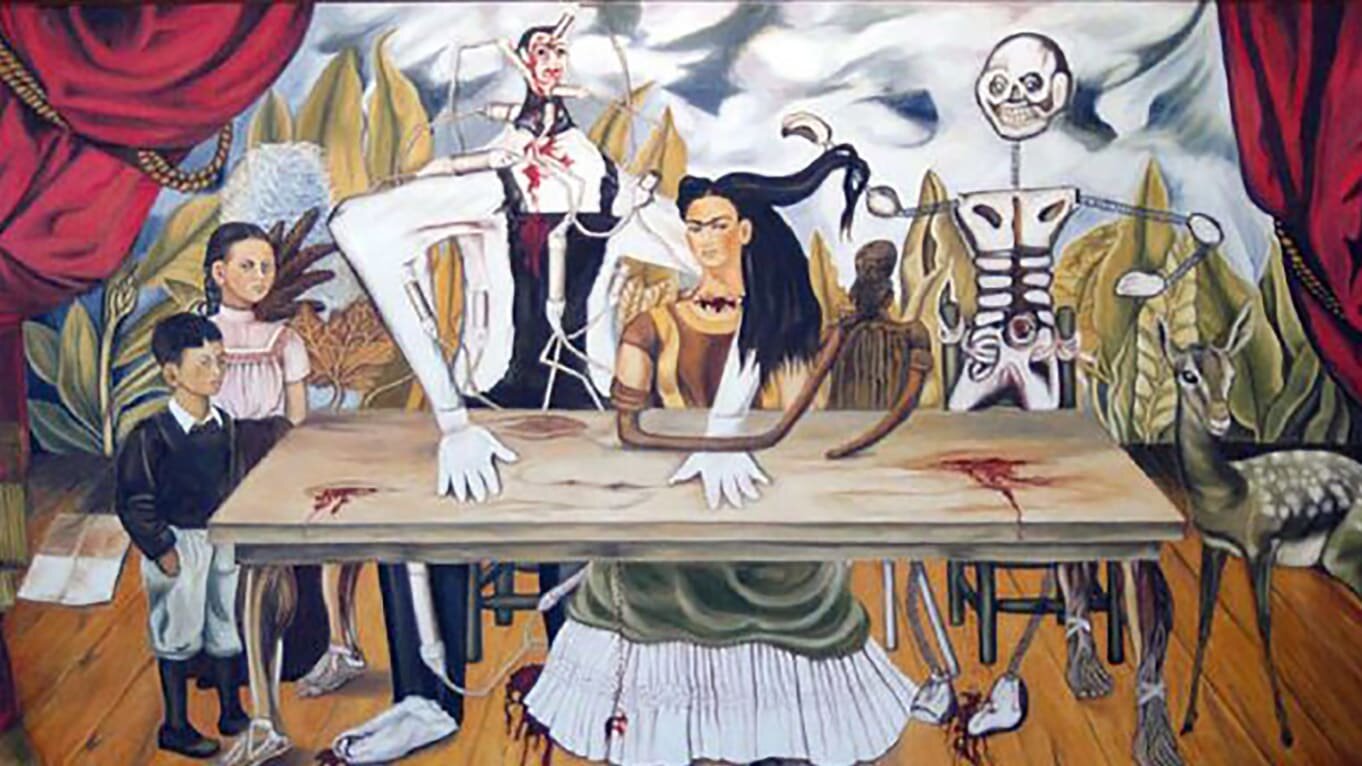

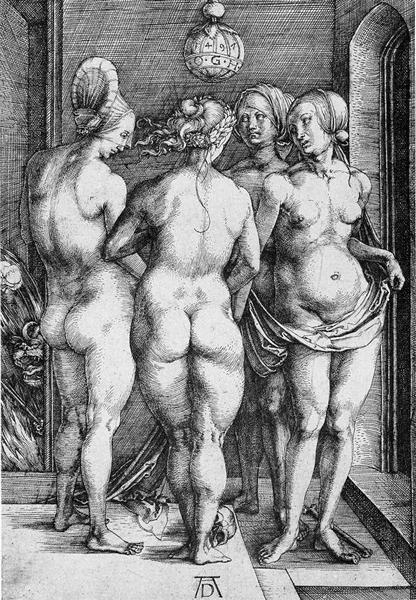
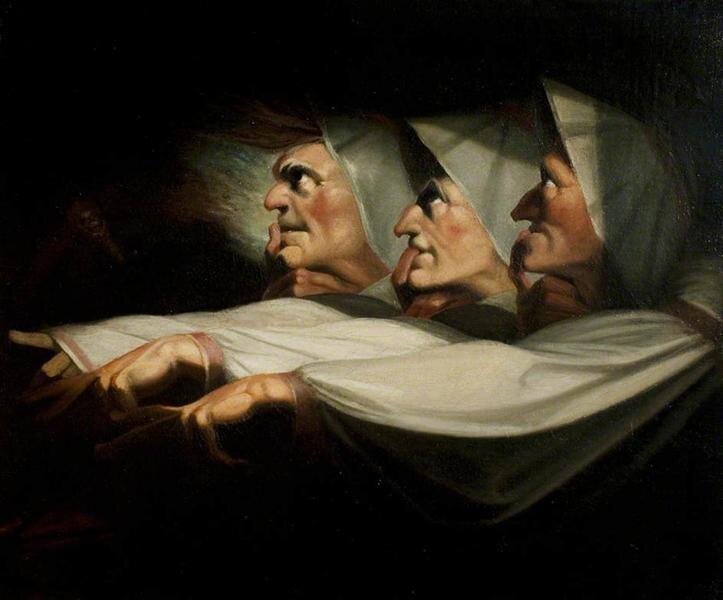
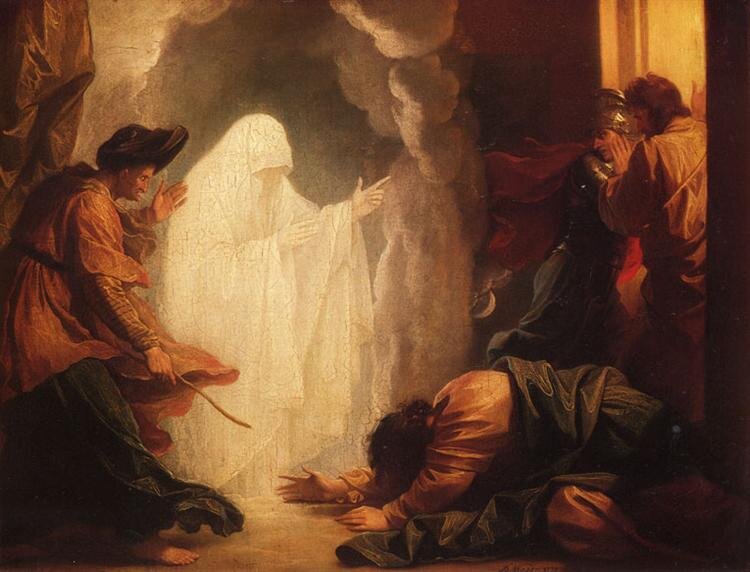
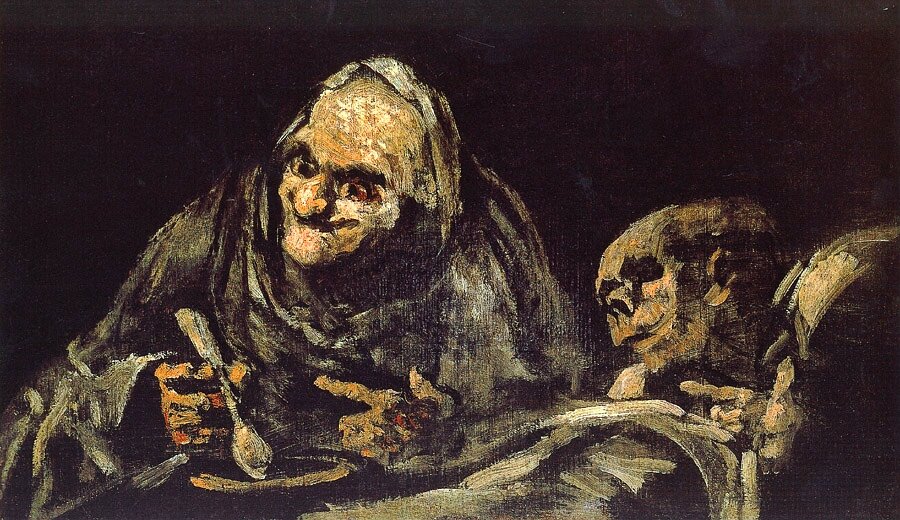
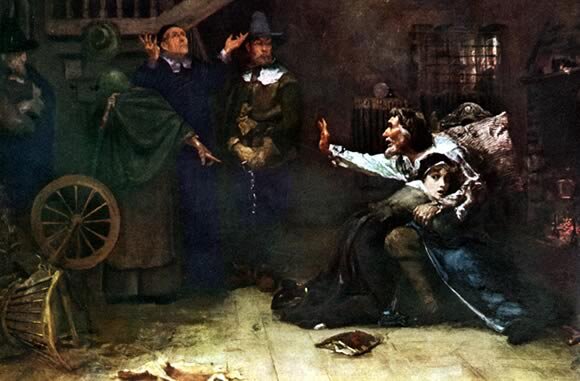

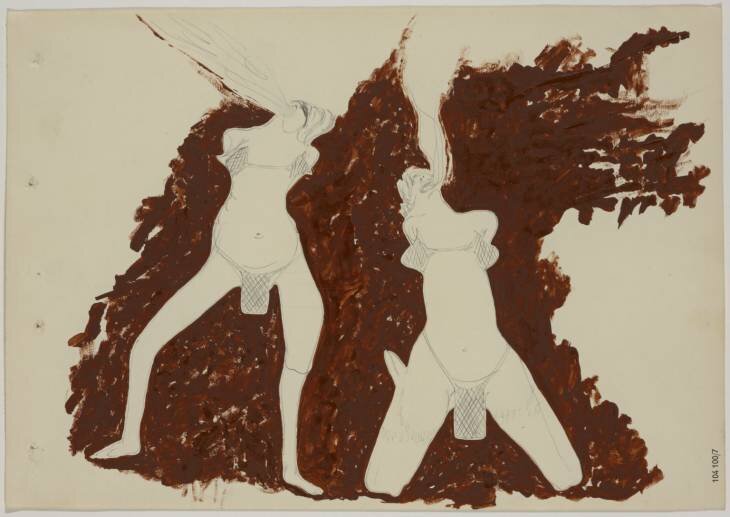
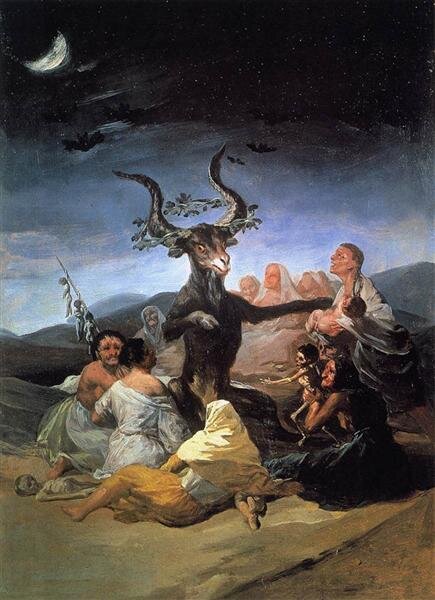

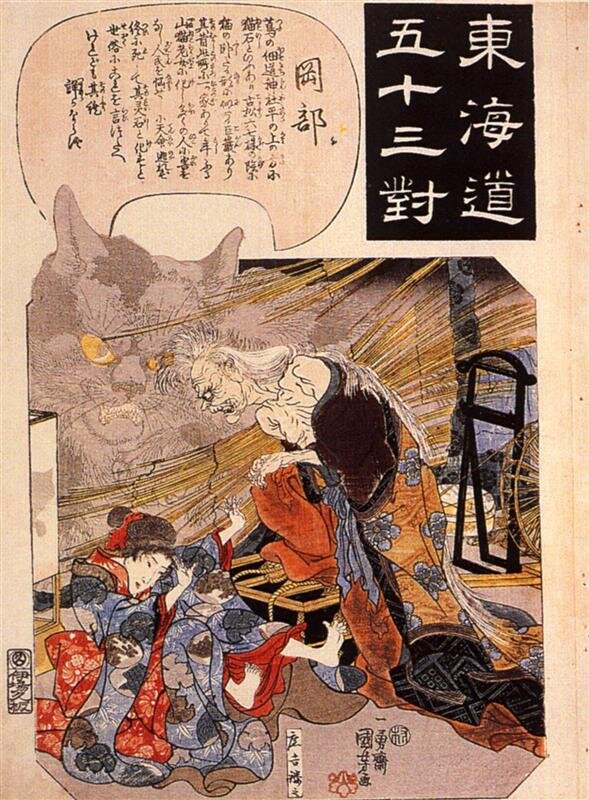
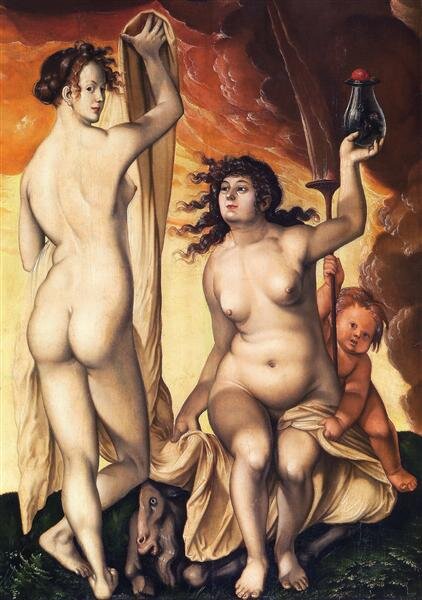
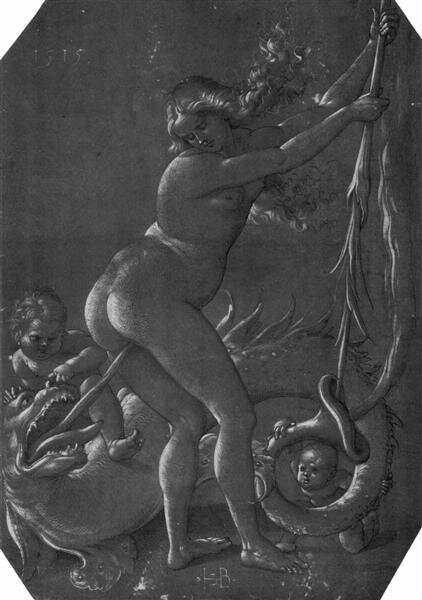
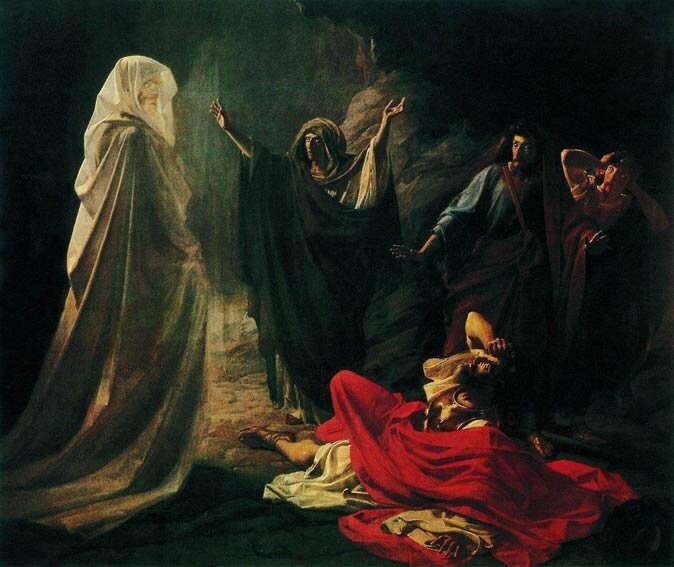
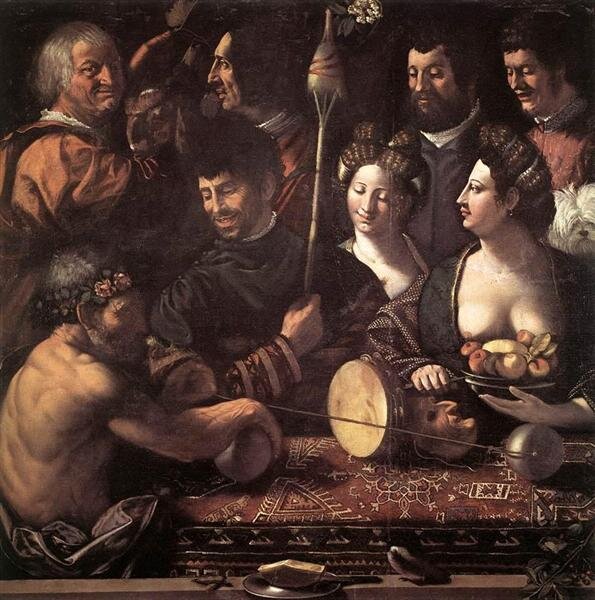
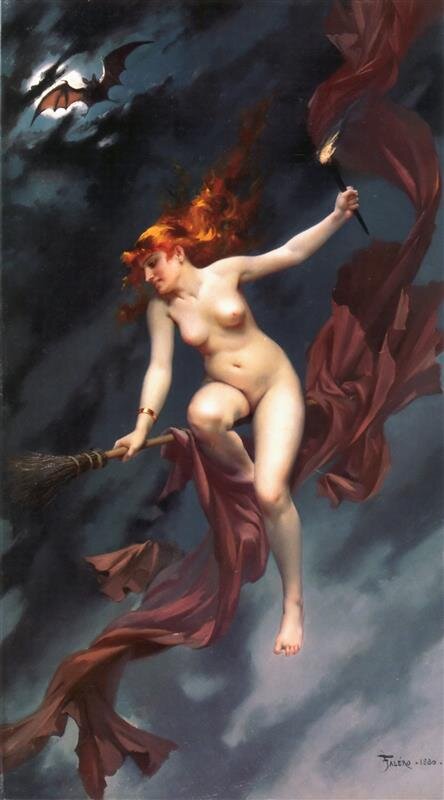
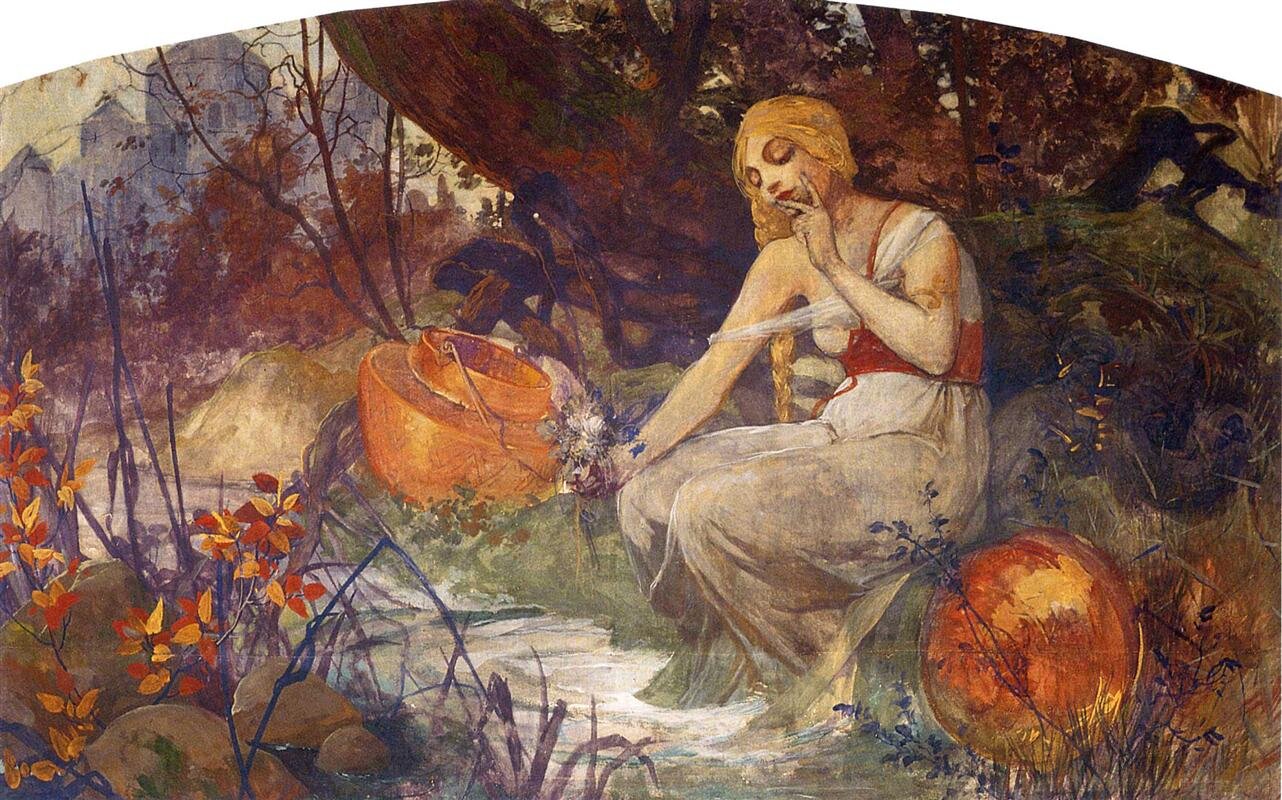
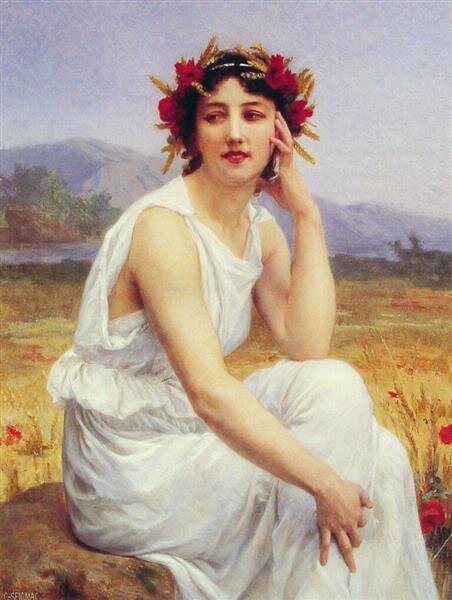
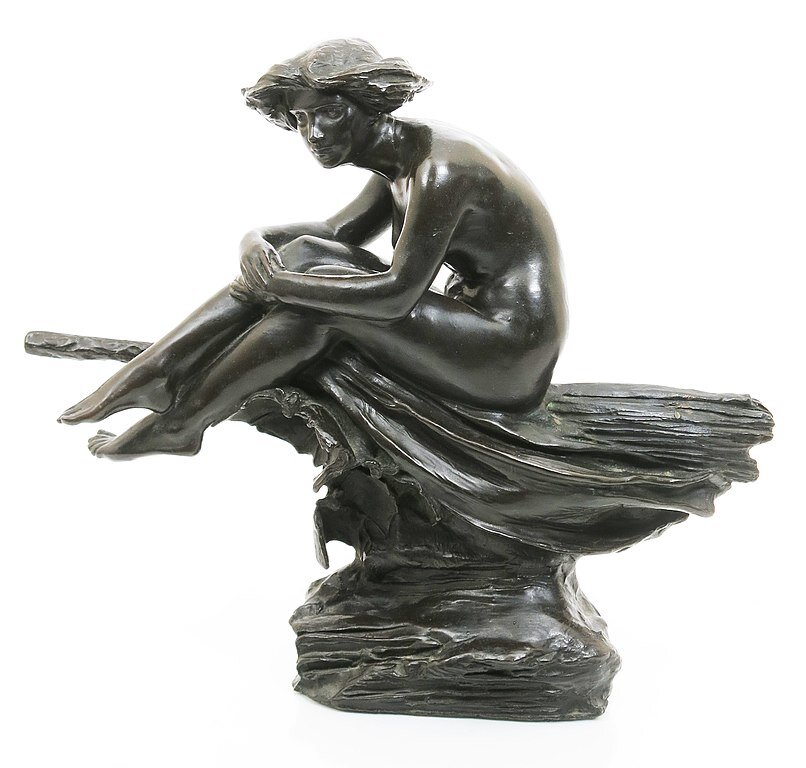

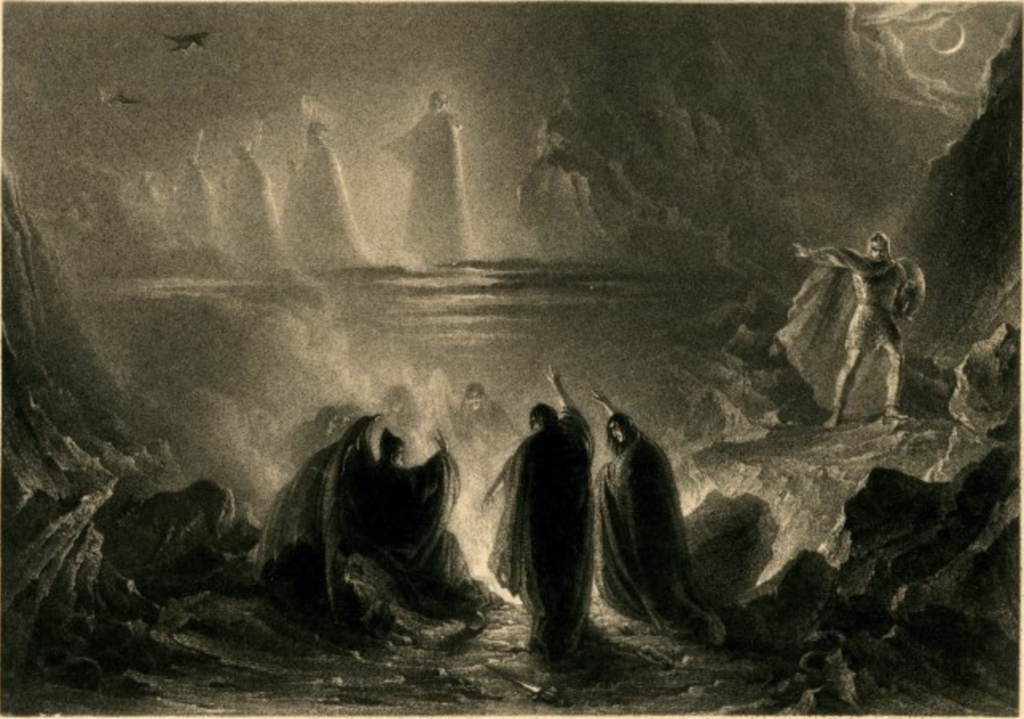
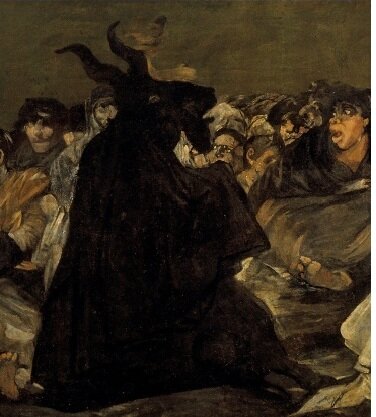

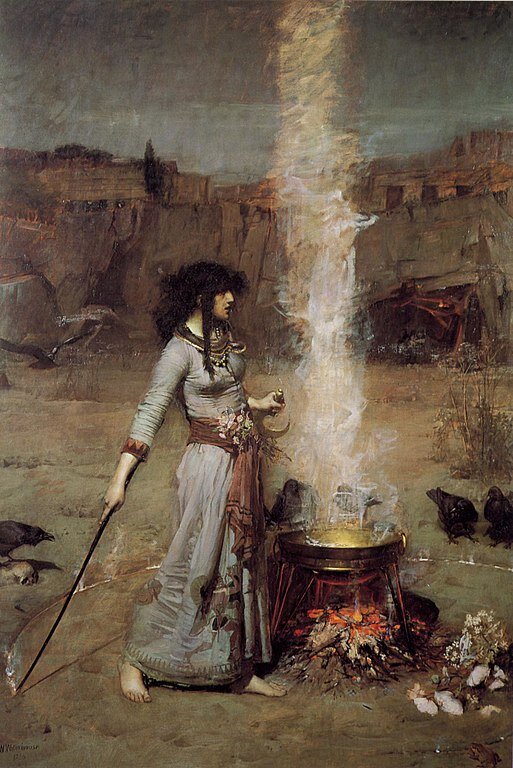
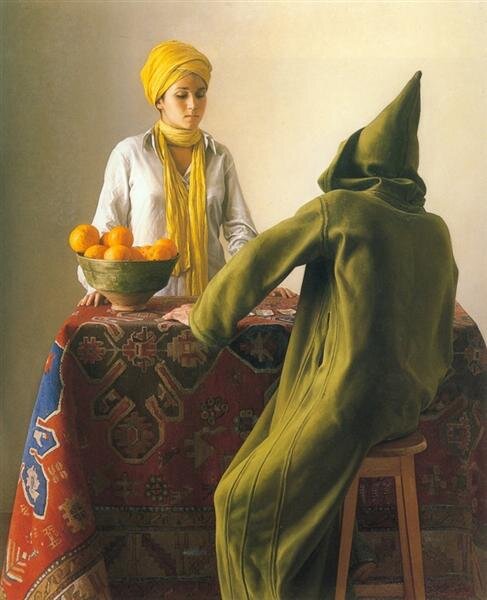

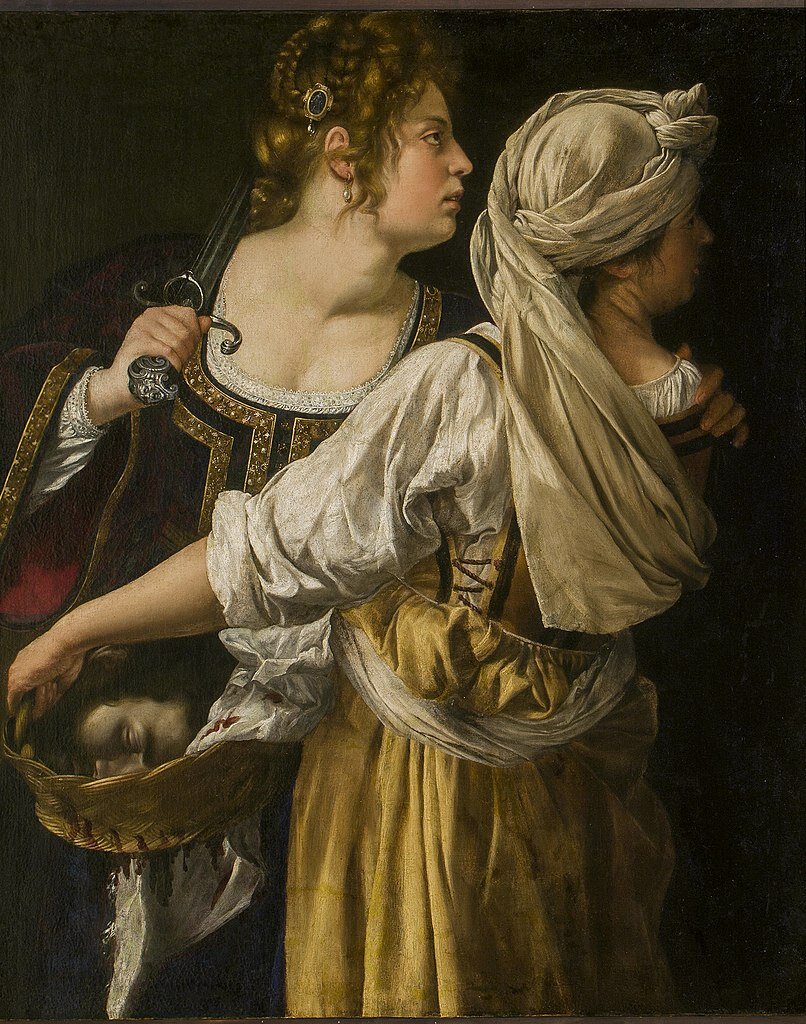

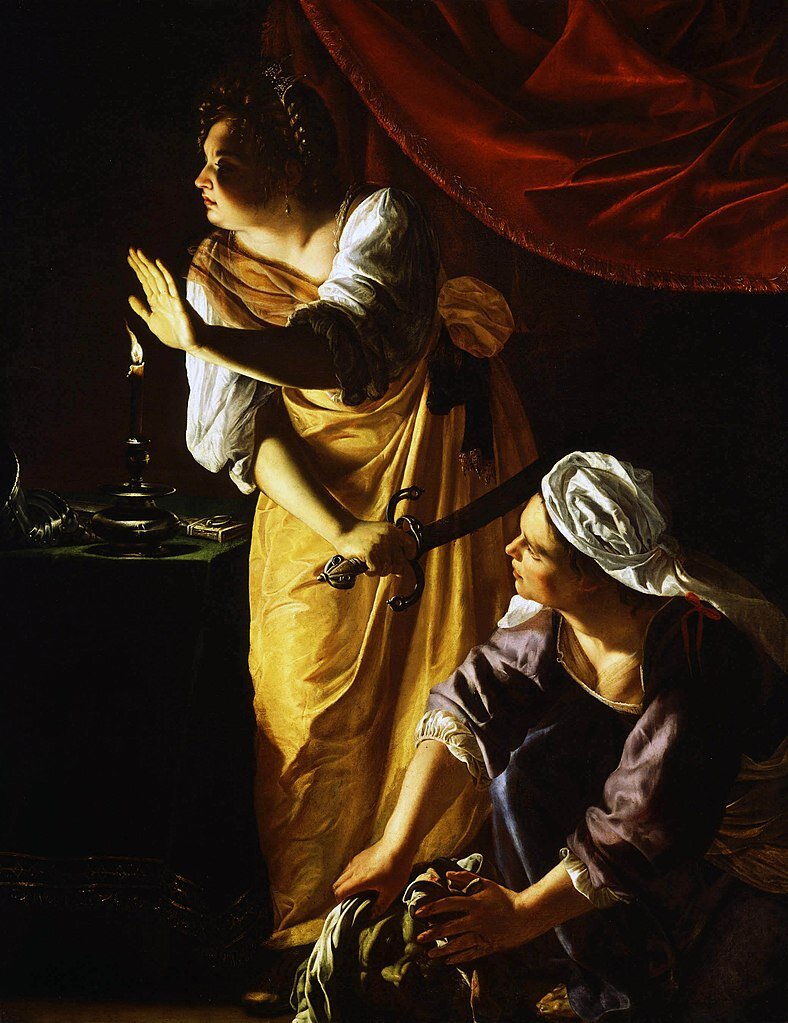













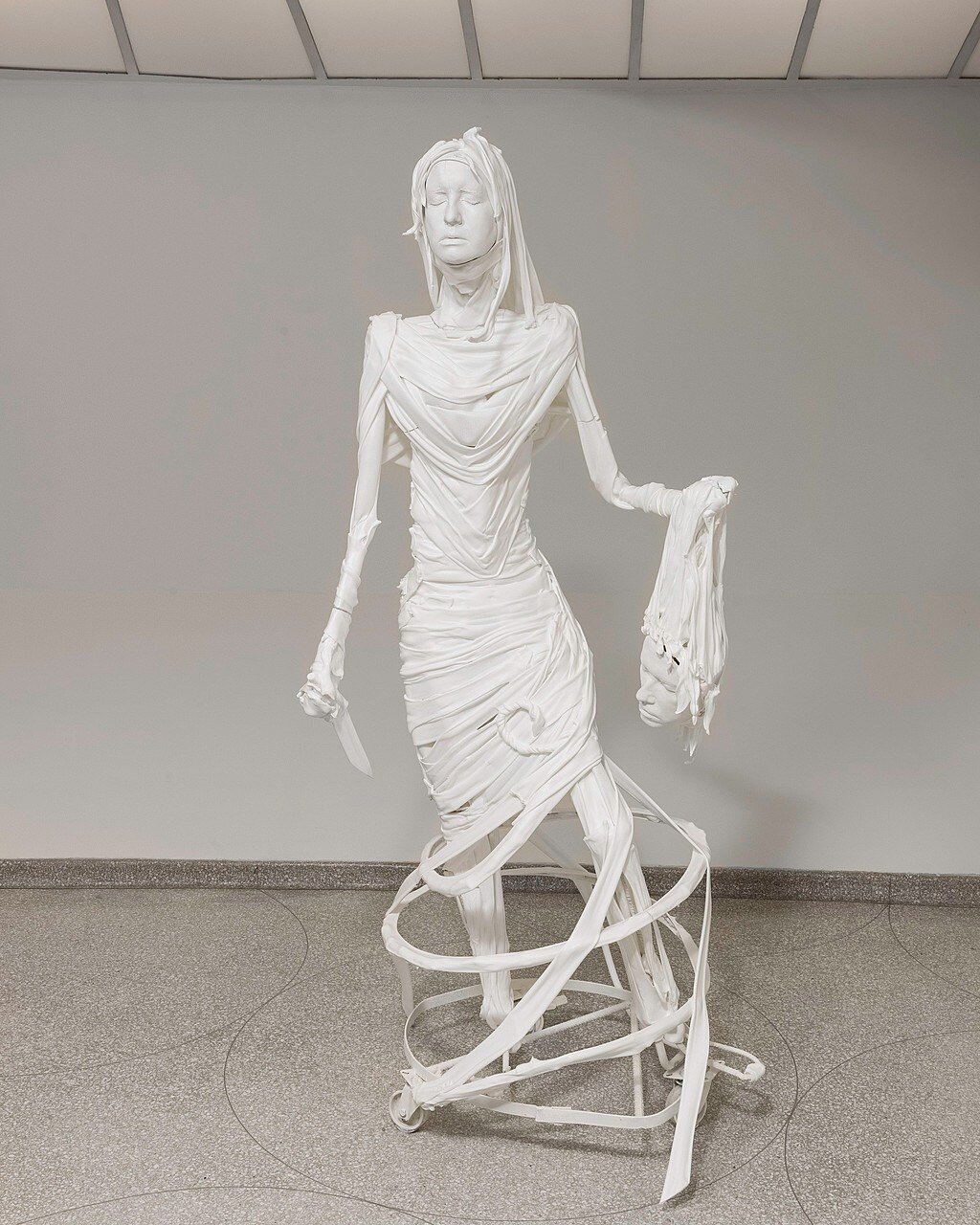

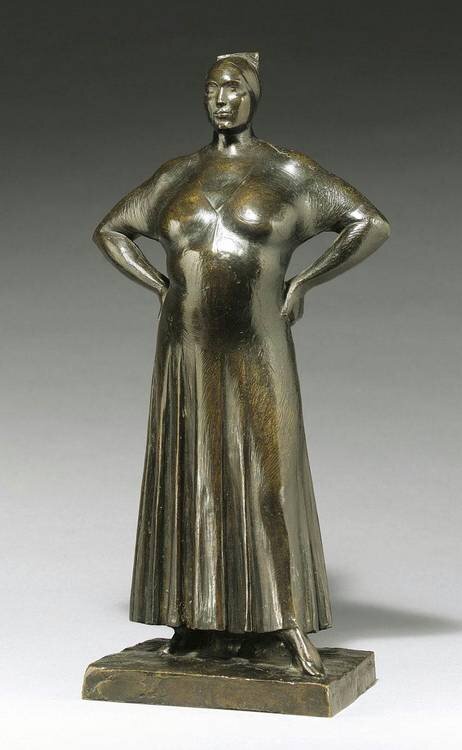



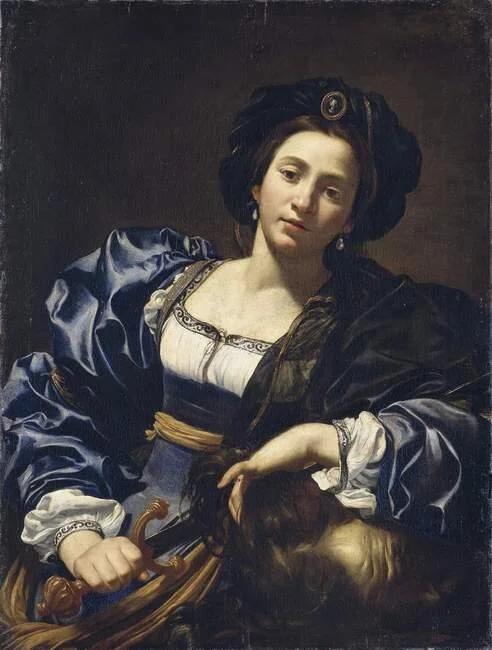
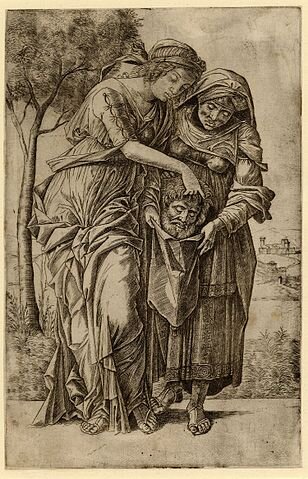
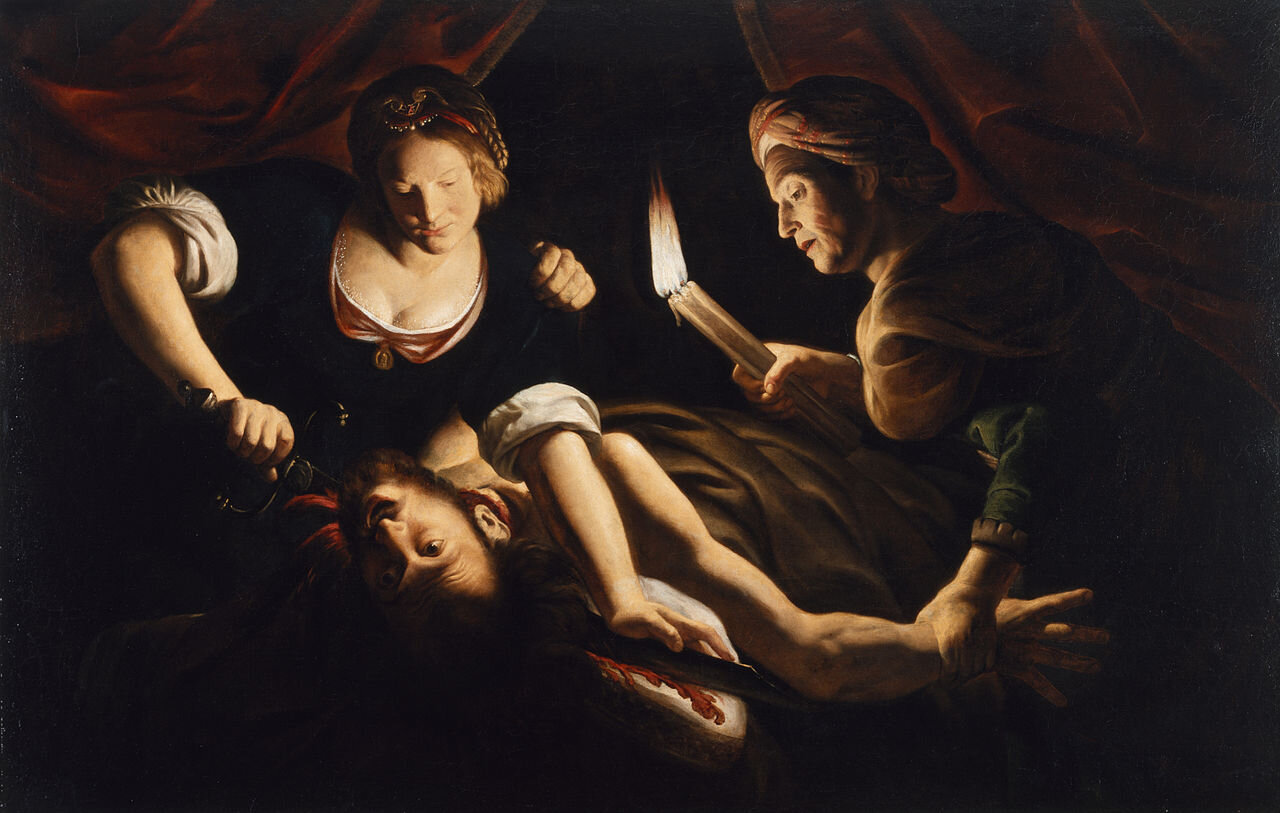







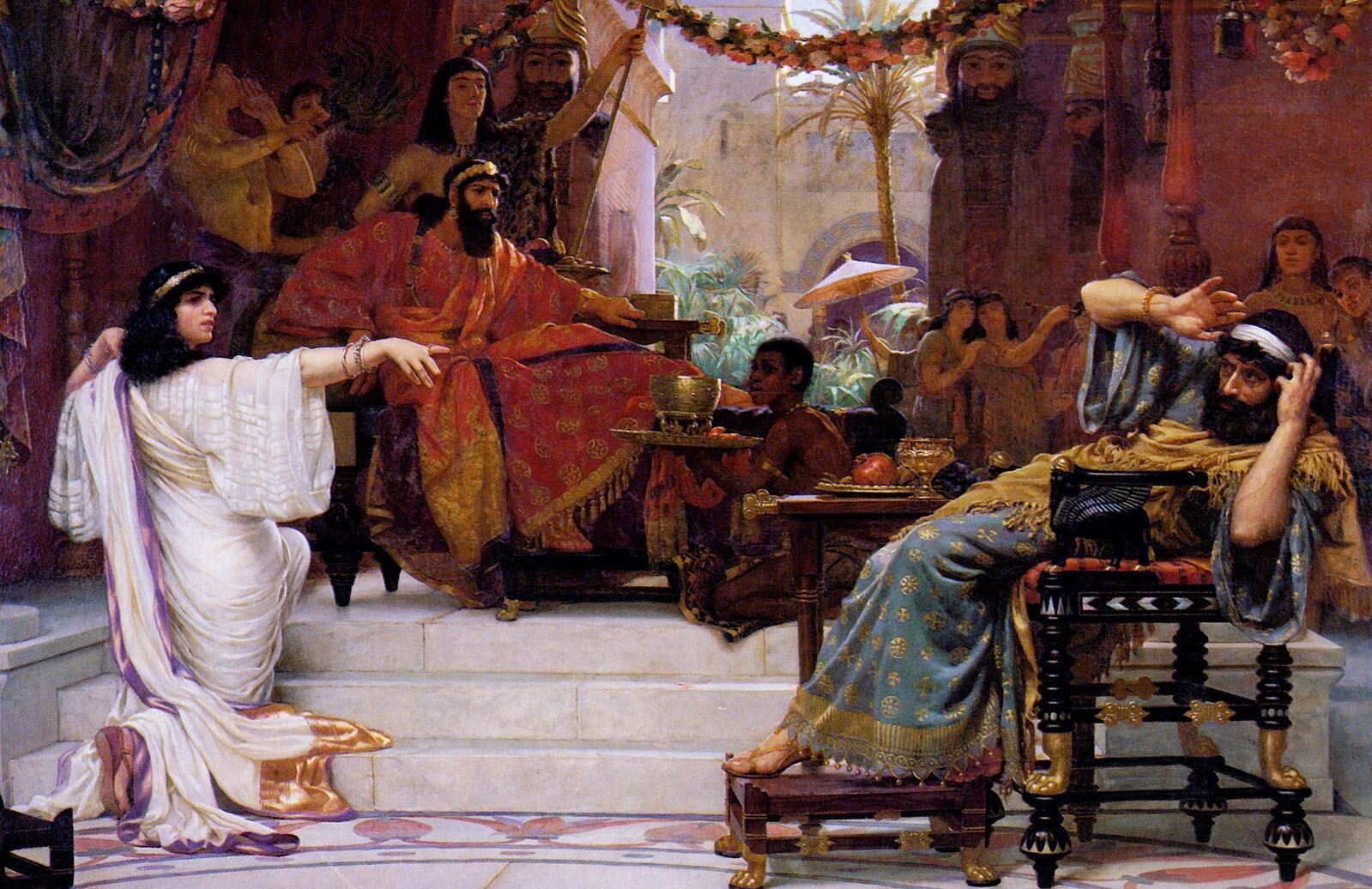
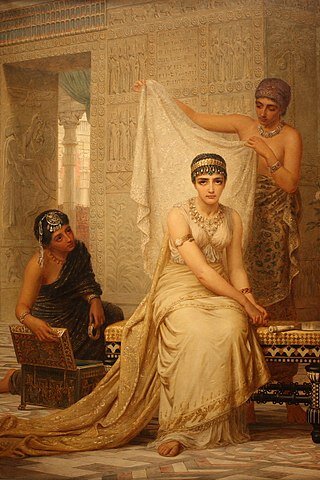
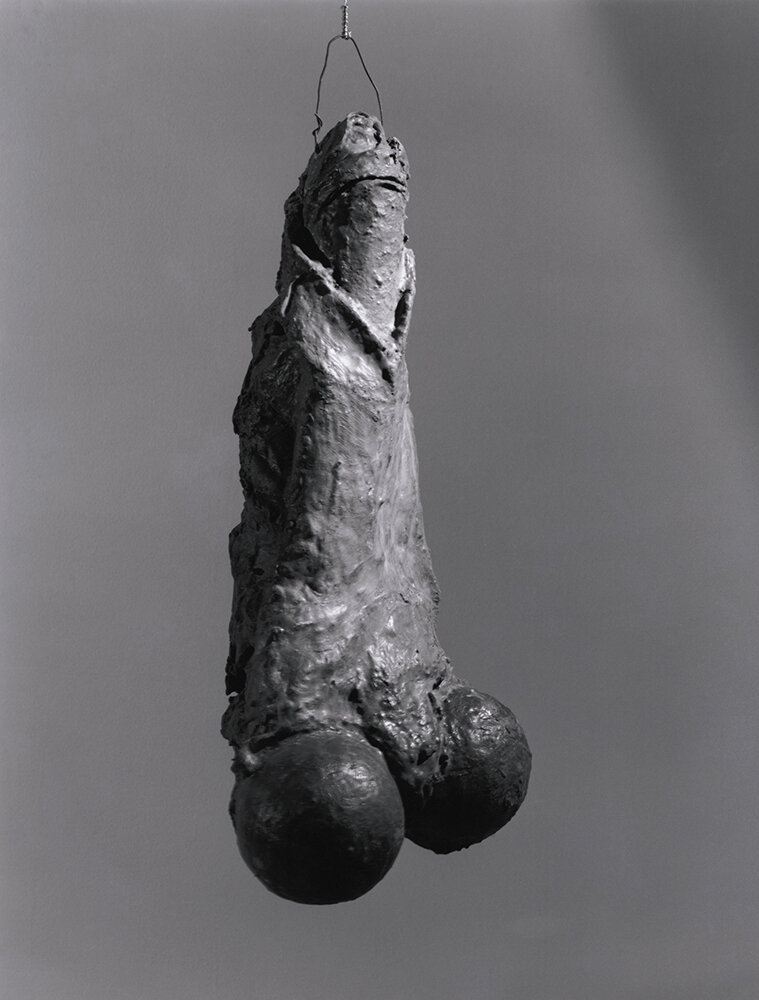


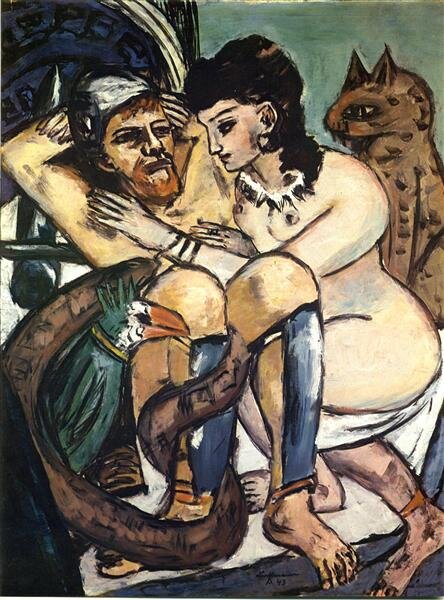
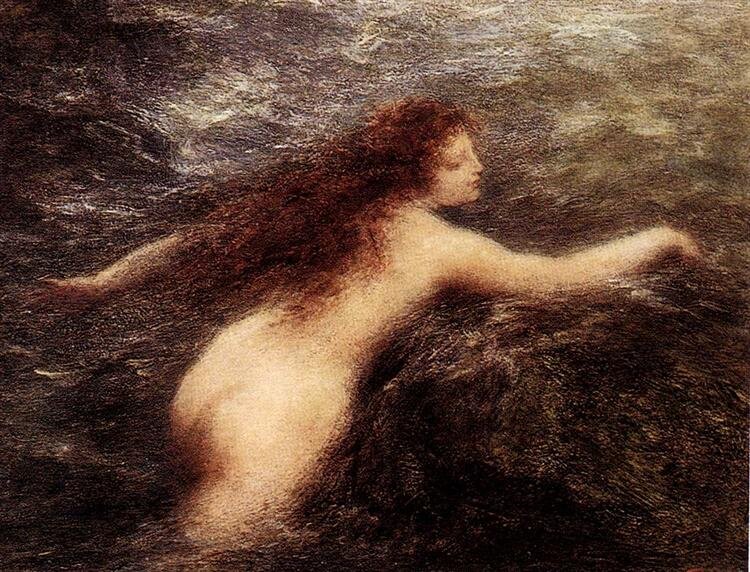
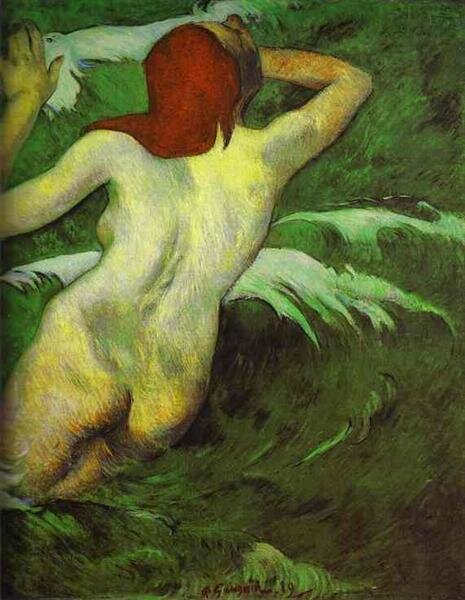
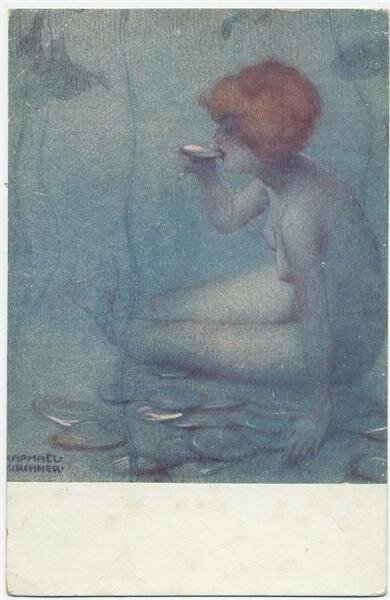

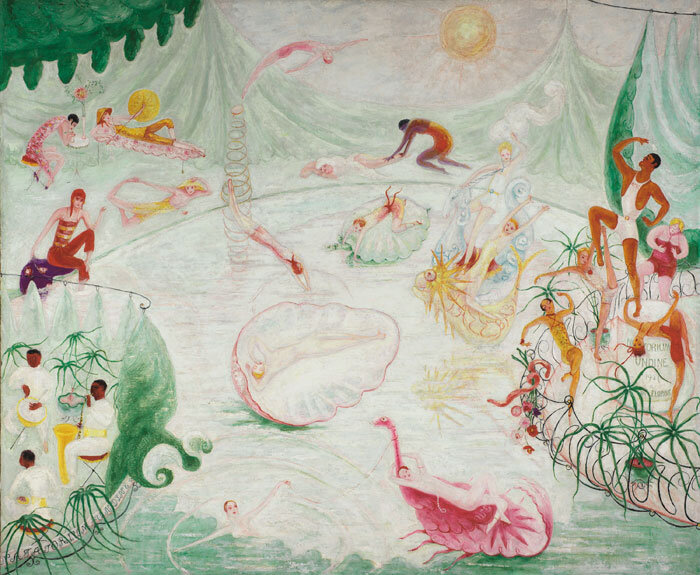

Frederick Sandys, 1866-1868, Birmingham Museum and Art Gallery, public domain, image via Wikipedia

Eugene Delacroix, 1862: Palais des Beaux-Arts de Lille, Lille, France; Louvre Museum

Rembrandt, Baroque

Adriaen Tomasz Key, c.1570-1575, Musé des Beaux-Arts de Rouen

Massimo Stanzione, Manchester City Art Galleries, Manchester, UK

Lucas Cranach the Elder, c.1530, Germany, Northern Renaissance: Budapest Museum of Fine Arts, Budapest, Hungary

Arnold Böcklin, 1898, Symbolism: Museum Pfalzgalerie Kaiserslautern, Kaiserslautern, Germany

Jan Gossart/ Mabuse, 1517, Northern Renaissance: Barber Institute of Fine Arts, Birmingham, UK

Giambologna, Mannerism (Late Renaissance)

Paolo Veronese, 1586, Kunsthistorisches Museum, Gemäldegalerie

Bartholomeus Spranger, 1580-85, Kunsthistorisches Museum

John William Waterhouse, 1896, Romanticism: Manchester Art Gallery, Manchester, UK
Hylas and the Nymphs is an 1896 oil painting by John William Waterhouse. The painting depicts a moment from the Greek and Roman legend of the tragic youth Hylas, based on accounts by Ovid and other ancient writers, in which the enraptured Hylas is abducted by Naiads (female water nymphs) while seeking drinking water. The painting has been interpreted as a metaphor for dangerous female sexuality, and warning against nymphomania.
Hylas was the son of King Theiodamas of the Dryopians. After Hercules killed Hylas's father, Hylas became a companion of Hercules and later his lover. They both became Argonauts, accompanying Jason in his quest on his ship Argo in seeking the Golden Fleece. During the journey, Hylas was sent to find fresh water. He found a pond occupied by Naiads, and they lured Hylas into the water and he disappeared.

Auguste Rodin
Paris 1840 – Meudon, France, 1917
About 1887-1888
Marble
44.5 x 45.7 x 27 cm
Executed by Jean Escoula between 1889 and 1892
Gift of the Huntly Redpath Drummond family, inv. 1958.1192
Rodin first exhibited the plaster cast of this magnificent sculpture at the famous exhibition Monet-Rodin, organized in 1889 by the Georges Petit gallery in Paris, which brought these two great geniuses together. “Three intertwined sirens sing; each of a different stature and pose, they form an uneven group, staggered like pan pipes,” critic Gustave Geffroy wrote. Emerging voluptuously from the unfinished block, the bodies and hair of these women — sirens in name only, as Rodin often titled his works after the fact — are interlaced in a Sapphic weave that obsessed the sculptor with its relentless round dance. The popularity of this model proved long-lived: eighteen copies are known, four of which are in marble — the Museum houses the first of these four rare pieces. Under the close supervision of the master, each marble version was carved by a workshop assistant, which explains the minor differences between them.

Hieronymus Bosch, c.1500, Northern Renaissance, National Museum of Ancient Art (MNAA), Lisbon, Portugal

Hieronymus Bosch, c.1500, Northern Renaissance, National Museum of Ancient Art (MNAA), Lisbon, Portugal

Paul Cezanne, c.1870, Romanticism: E.G. Bührle Foundation, Zürich, Switzerland

Salvador Dali, 1946, Surrealism: Royal Museums of Fine Arts of Belgium, Brussels, Belgium

Paolo Veronese, 1552 - 1553, Mannerism (Late Renaissance): Musee des Beaux-Arts de Caen, Caen, France

Damien Hirst, 2013, Gold, silver, 320 x 397 x 397mm (12.6 x 15.6 x 15.6in)
Private Collection
Image © Damien Hirst and Science Ltd. All rights reserved, DACS 2018

Early seventh-century BCE pithos from the Kykladic Islands showing Perseus about to chop Medusa’s head off. In this version she has the body of a horse.

1st-2nd century A.D. Courtesy of The Metropolitan Museum of Art.

Roman mosaic of the head of Medusa from a tepidarium Tunisia dating to the late second century CE

Medusa mosaic with blonde snakes (2nd c. CE, National Archaeological Museum, Athens), image via Wikipedia

(Greek, 4th century BCE), bronze, width: 4 7/8 inches; length: 15 3/4inches (courtesy the Metropolitan Museum of Art, Gift of Mr. and Mrs. Jonathan P. Rosen, 1991)

Created for the temples of Venus and Roma, built 137 AD in Rome, now in Roman-Germanic Museum of Cologne, Germany.
photo: Christoph Wagener, CC BY 3.0 <https://creativecommons.org/licenses/by/3.0>, via Wikimedia Commons

Studio of Antonio Canova, (Rome, 1806-07), plaster cast with modern metal rod (courtesy Metropolitan Museum of Art, Fletcher Fund, 1967)

Greek terra-cotta plaque of Medusa running, dated to between c. 620 and c. 600 BCE, currently on display in the Archaeological Museum of Syracuse

Archaic Gorgon (around 580 BC), as depicted on a pediment from the temple of Artemis in Corfu, on display at the Archaeological Museum of Corfu.
image via wikipedia

Tondo from an Attic black-figure kylix dated to the late sixth century BCE depicting the face of a Gorgon

first-century CE Roman door decoration of the head of Medusa from the city of Pompeii, Museo Archeologico (Naples)
image from Wikicommons

Roman relief carving of the head of Medusa dating to the second or third century CE
photo from Wikicommons

© Michael Greenhalgh, CC BY-SA 2.5 <https://creativecommons.org/licenses/by-sa/2.5>, via Wikimedia Commons

Ancient Roman fresco, Pompeian Fourth Style (45-79 AD), National Archaeological Museum of Naples, Italy
image: wikicommons

Vienna, Schönbrunn gardens, statue
Omphale wearing Hercules' garb, 18th-century sculpture from the Schönbrunn Garden by Joseph Anton Weinmüller
image: wikicommons

Angelica Kauffman, c.1780, Neoclassicism

Paris Bordone, 1555, Museum of Art and Archaeology, University of Missouri

Engraving by J. Punt and P. Tanjé after C. Troost.

. . . a woman descending a ladder in to the arms of her lover; a duel between the woman's lovers; the demons offer such solutions as divorce and suicide.
George Cruikshank, 1792-1878, published London 1875, National Library of Medicine

John Brown, 1765, Cleveland Museum of Art
Brown is known for a small group of monochromatic drawings imbued with sinister overtones. This drawing exemplifies his Roman street scenes which often depict women dressed in spectacular, billowing costumes. Here, a coquette with bare ankles and plunging décolletage is surrounded by a crowd of vulgar types who leer, ogle, judge, and scorn. The reverse of the sketchbook sheet includes two independent drawings: a study of faces in fierce and intense expressions, and a pair of women wearing swirling gowns. One figure raises her hand in a mysterious gesture that casts a shadow on her throat resembling a claw. Whether the viewer is being beckoned or forewarned remains a mystery.

Paul Klee, 1922, Solomon R. Guggenheim Museum, New York Estate of Karl Nierendorf, By purchase

Lucas Cranach the Elder (1472–1553) :Louvre Museum

Marc Chagall, 1956
Dalila coupe les cheveux de Samson qu'elle a endormi sur ses genoux et, l'ayant ainsi privé de sa force surhumaine, va le livrer aux Philistins qui le guettent (Juges, XVI, 15-18)

William Bouguereau, , 1850, Oil on canvas 280.5 x 225.3 cm, Musée d’Orsay, Paris.

Edvard Munch, 1895, Solomon R. Guggenheim Museum, New York Estate of Karl Nierendorf, By purchase

Dante Gabriel Rossetti, 1869, Romanticism: Buscot Park (Faringdon Collection), Faringdon, UK

Arthur Rackham, Art Nouveau (Modern)
Series: The Legends of King Arthur and the Knights of the Round Table, by Nelly Montijn-De Fouw

Edvard Munch, 1894, Symbolism, Rasmus Meyer Collection, Bergen, Norway

Paolo Domenico Finoglia or possiblyArtemisia Gentileschi, c.1640:Fogg Art Museum

Sandro Botticelli, c. 1485, National Gallery, London
View video: Caroline Campbell, The Jacob Rothschild Head of the Curatorial Department discusses this painting: https://youtu.be/jNkHq6QXX30

Joachim Anthonisz. Wtewael (Dutch, 1566 - 1638), 1604–1608, Oil on copper, 20.3 × 15.5 cm (8 × 6 1/8 in.), 83.PC.274
The J. Paul Getty Museum, Los Angeles

Mattia Preti, Italian, 1613–1699, Saint Louis Art Museum, Funds given by Opal and Arthur H. Meyer Jr.

Pieter Bruegel the Elder, c.1565, Northern Renaissance, Courtauld Gallery, London, UK

Max BECKMANN, 1911, Printer: W. Glückselig, Druckerei Hermann Birkholz, Berlin, Publisher: E.W. Tieffenbach, Officina Serpentis, Berlin
Dimensions: Image: 25.5 x 23.7 cm (10 1/16 x 9 5/16 in.) Support: 58 x 41.5 cm (22 13/16 x 16 5/16 in.)
Medium: Lithograph on Butten paper

Freda Kahlo, 1940, oil on canvas, lost, whereabouts unknown

Two Old Ones Eating Soup / The Witchy Brew
Francisco Goya, 1819 -1823, Museo del Prado, Madrid, Spain

Artemisia Gentileschi, 1620, National Museum of Capodimonte, Naples, Italy, Uffizi Gallery, Florence, Italy

Artemisia Gentileschi, 1618-19, Palazzo Pitti
Judith with her maidservant holding a basket severed head of Holofernes

Lucas Cranach the Elder, c.1530, Germany, Northern Renaissance: Jagdschloß Grunewald, Berlin, Germany

Artemisia Gentileschi, 1623-25, Detroit Institute of Arts
Judith and her servant pause, seeming to hear a noise outside Holofernes’ tent. The shadowy interior is theatrically illuminated by a single candle. Judith’s hand shields her face from the glow, drawing attention to Holofernes’ discarded iron gauntlet. The viewer’s eye travels to the object in the maidservant’s hands: Holofernes’ severed head.

Andrea Mantegna, Musee des Beaux Arts de Montreal, Padua 1431 – Mantua 1506, Tempera and gold on linen canvas, 65 x 31 cm, Purchase, John W. Tempest Fund, inv. 1920.103

Artemisia Gentileschi, 1611-1612, National Museum of Capodimonte, Naples. Image via Wikipedia

Gustav Klimt, 1901, Ostrava Fine Ars Gallery, Ostrava, Czech Republic
image via Wikipedia

Cristofano Allori, 1613, Royal Collection, London, image via Wikipedia

unknown artist, Reading Museum & Town Hall

Paweł Althamer, 2011, Solomon R. Guggenheim Museum, New York Commissioned by Deutsche Bank AG in consultation with the Solomon R. Guggenheim Foundation for the Deutsche Guggenheim, Berlin
Medium: Pigmented plastic, plaster, paint, and steel armature with wheels

Correggio, 1512 - 1514, High Renaissance, Musée des Beaux-Arts de Strasbourg, Strasbourg, France

Sandro Botticelli, 1495-1500, Rijksmuseum, Amsterdam, Netherlands

Simon Vouet, first half of 17th century, Alte Pinakothek, Munich, image via Wikipedia

Girolamo Mocetto After Andrea Mantegna, 1500, British Museum. Image via Wikipedia

Trophime Bigot, c. 1640, Walters Art Museum, Rome. Image via Wikipedia

Artemisia Gentileschi, c.1620, Museum of Fine Arts, Budapest, public domain, image courtesy of Wikimedia
The theme, from the Book of Judges, verses 4:11-22 and 5:24-31, depicts the moment in which a Kenite woman Jael is about to kill Sisera, a defeated Canaanite general. After his defeat by the Israelites he flees to a nearby settlement, where Jael takes him in, promises to feed him and hide him from the authorities. The moment he is asleep she drives a tent peg through his temple; an act that earned Jael praise for her courage.

Bartolomeo Veneto, 16 century, Private collection, Milan, public domain, image via Wikipedia

James Tissot, 1836-1902, Jewish Museum, New York, public domain, image via Wikipedia

Edwin Long, 1829-1891, National Gallery of Victoria, Melbourne.
Esther is described in the Book of Esther as a Jewish queen of the Persian king Ahasuerus (often identified as Xerxes I). In the story, Ahasuerus seeks a new wife after his queen, Vashti, refuses to obey him. Esther is chosen for her beauty. The king's chief advisor, Haman, is offended by Esther's cousin and guardian, Mordecai, and gets permission from the king to have all the Jews in the kingdom killed. Esther foils the plan, and wins permission from the king for the Jews to kill their enemies, and they do so. Her story is the traditional basis for Purim, which is celebrated on the date given in the story for when Haman's order was to go into effect, which is the same day that the Jews killed their enemies after the plan was reversed.

Art de Gelder, 1675, Museo Nacional de Bellas Artes

Henri Fantin-Latour, c.1896, Symbolism, Hermitage Museum, Saint Petersburg, Russia
Undine (Ondine) is a mythological figure in the European tradition, a water nymph who becomes human when she falls in love with a man but is doomed to die if he is unfaithful to her.

Paul Gauguin, 1889; France, Post-Impressionism: Cleveland Museum of Art (CMA), Cleveland, OH, US